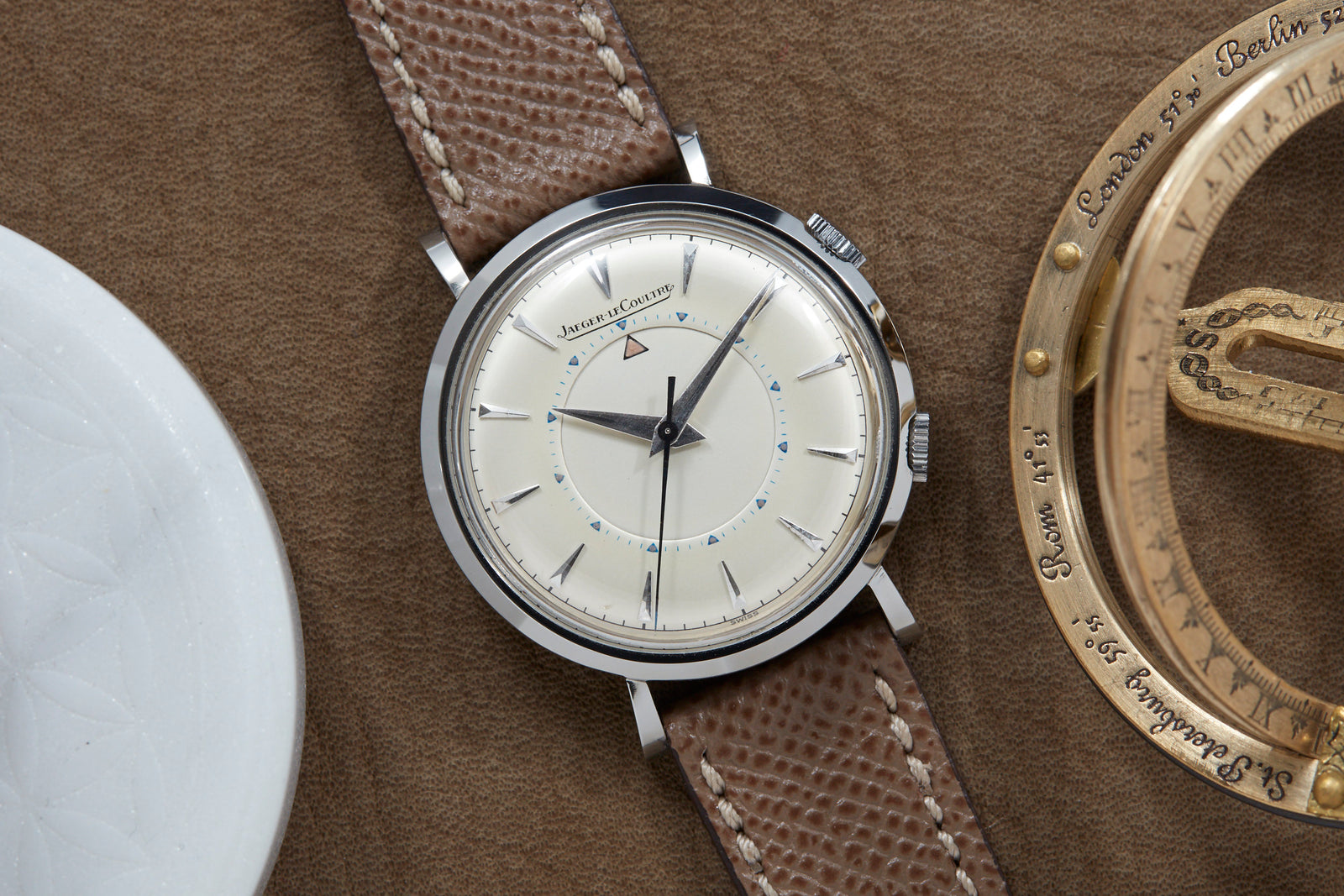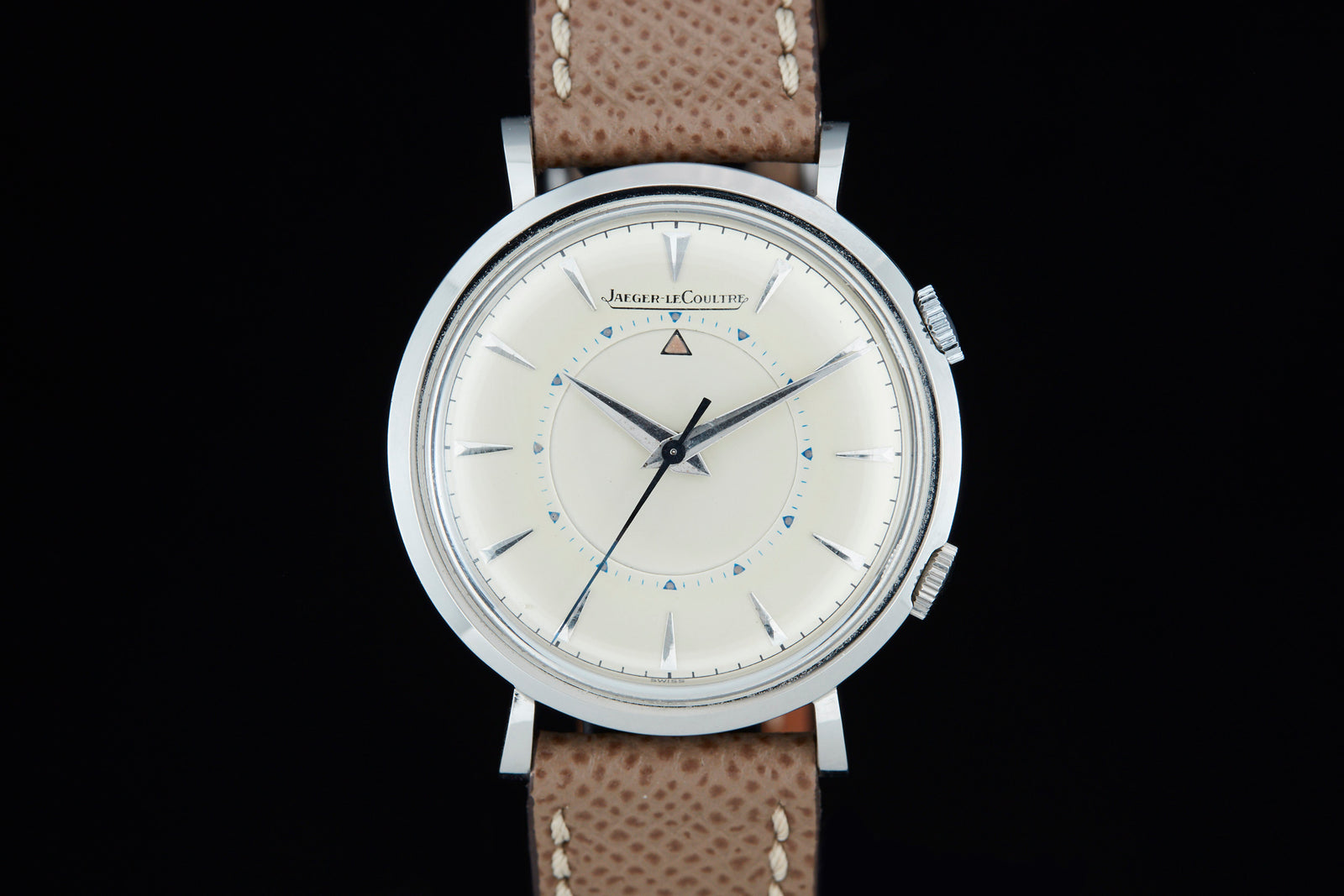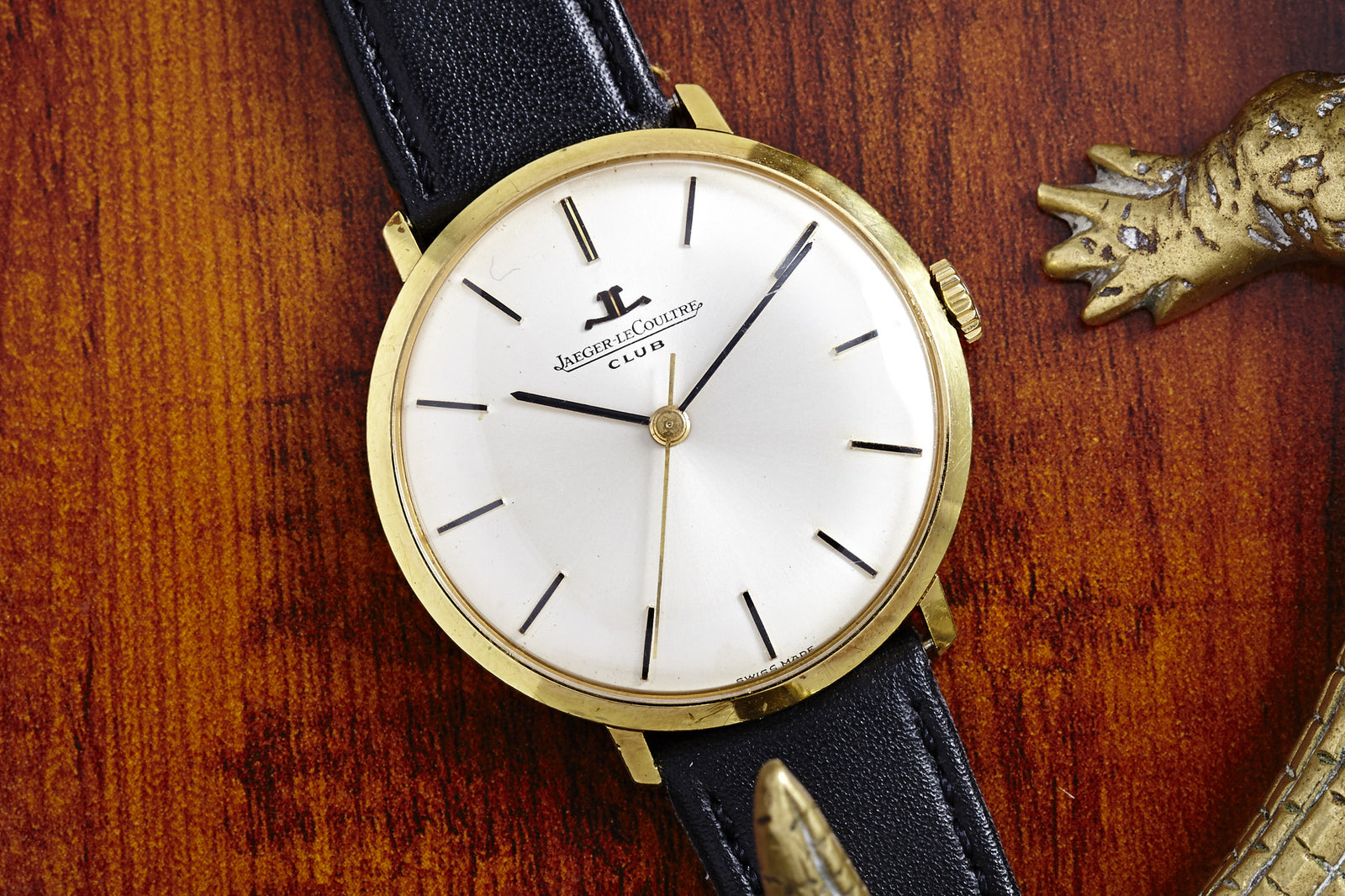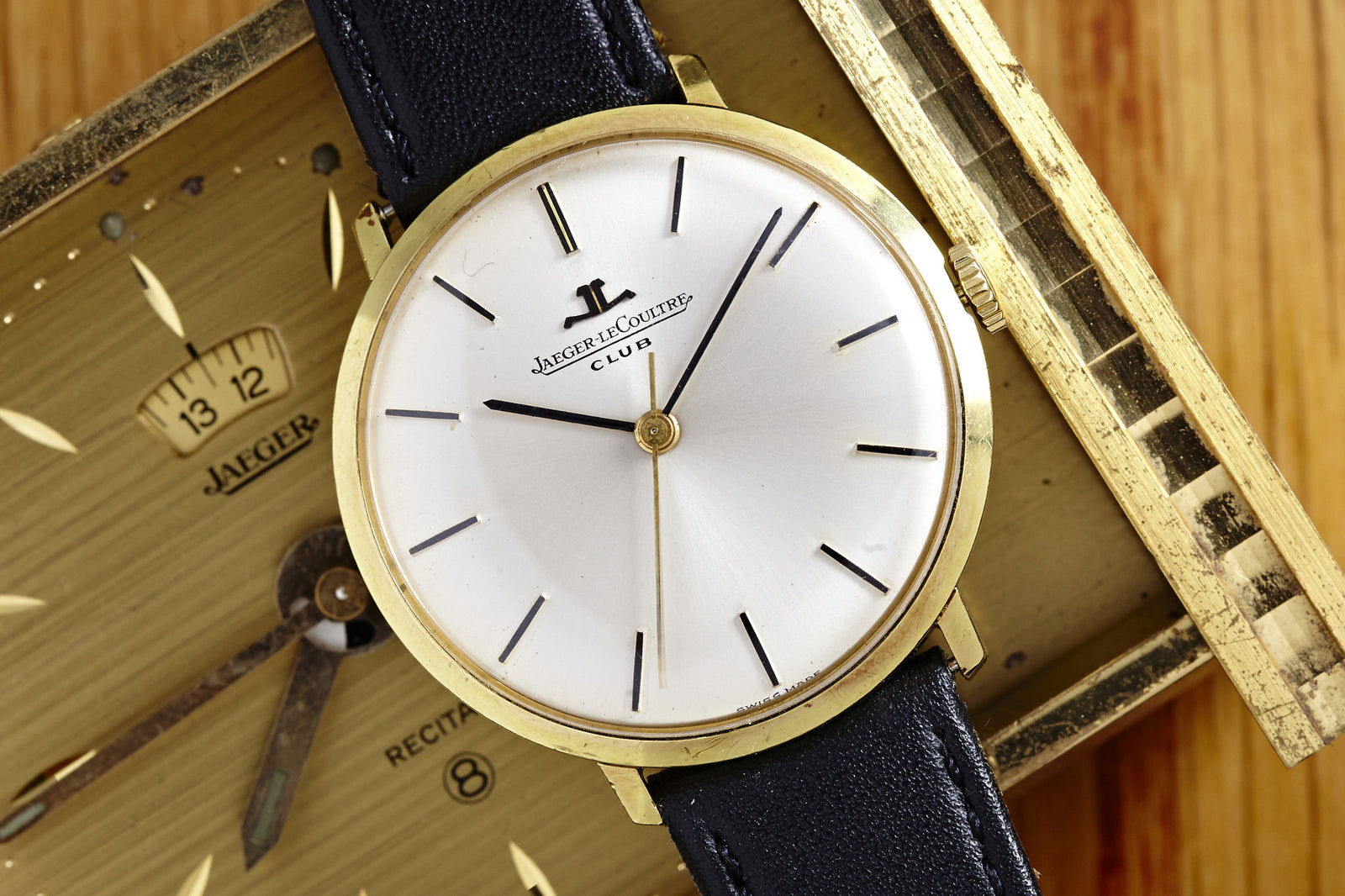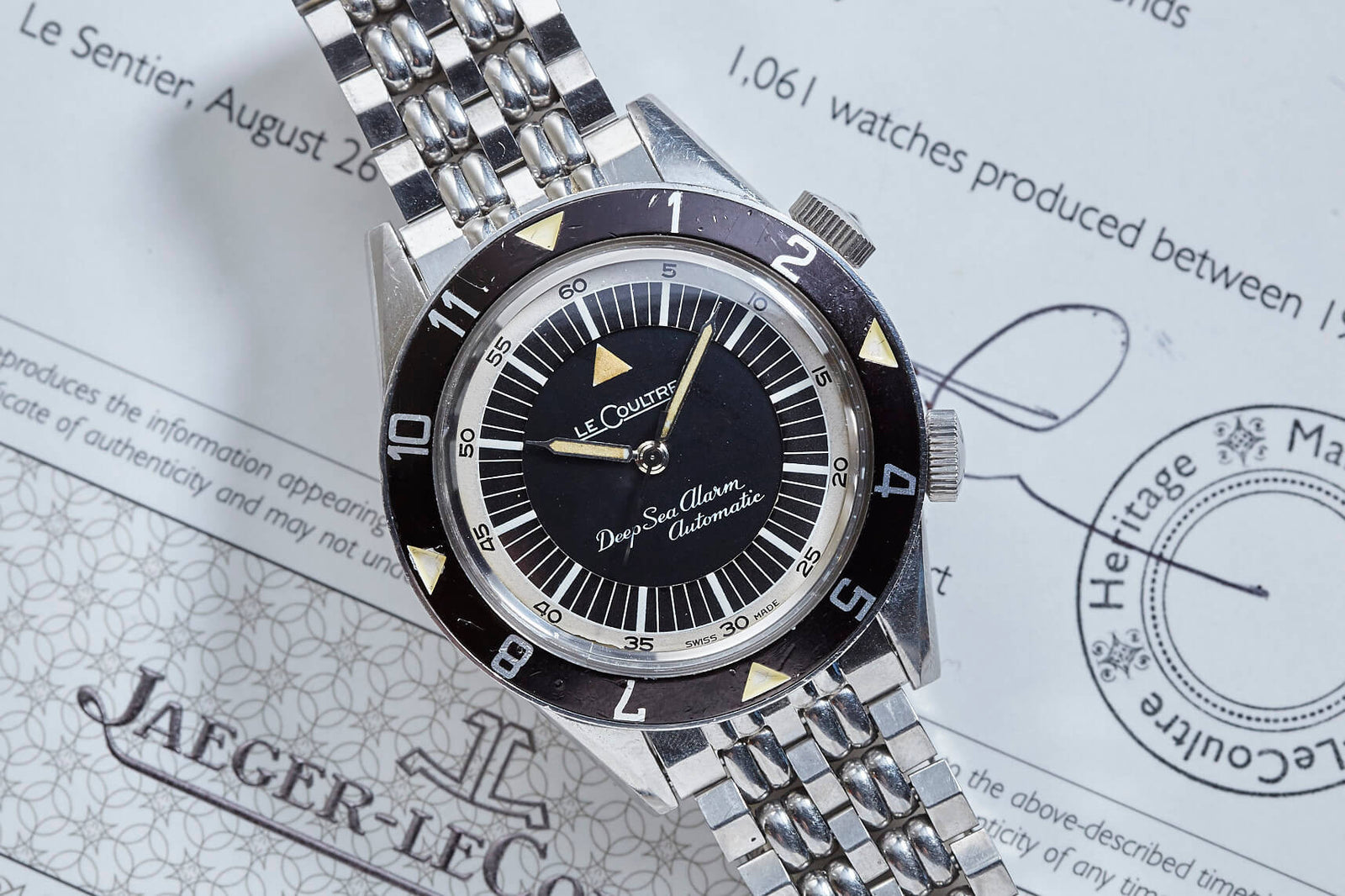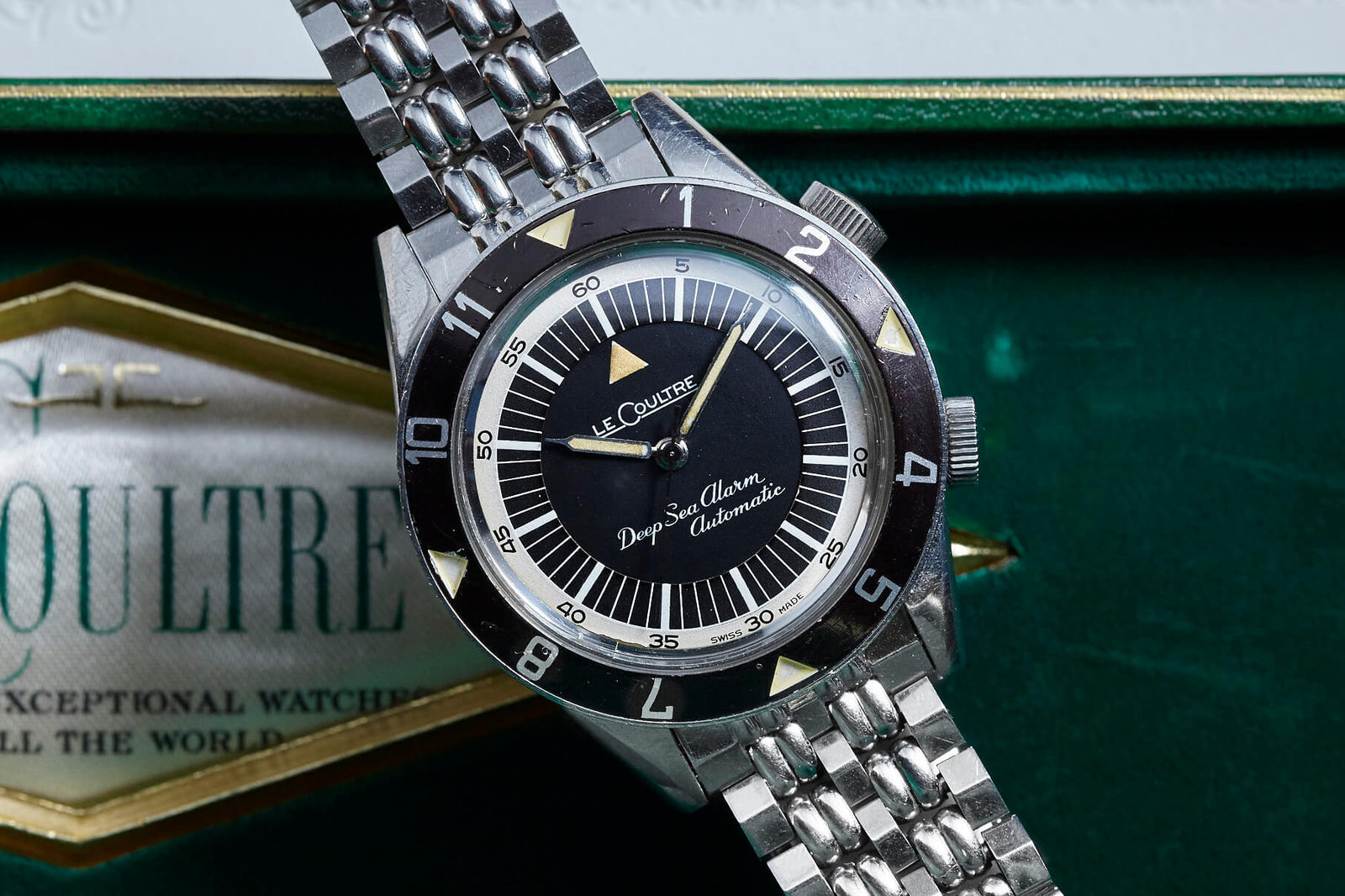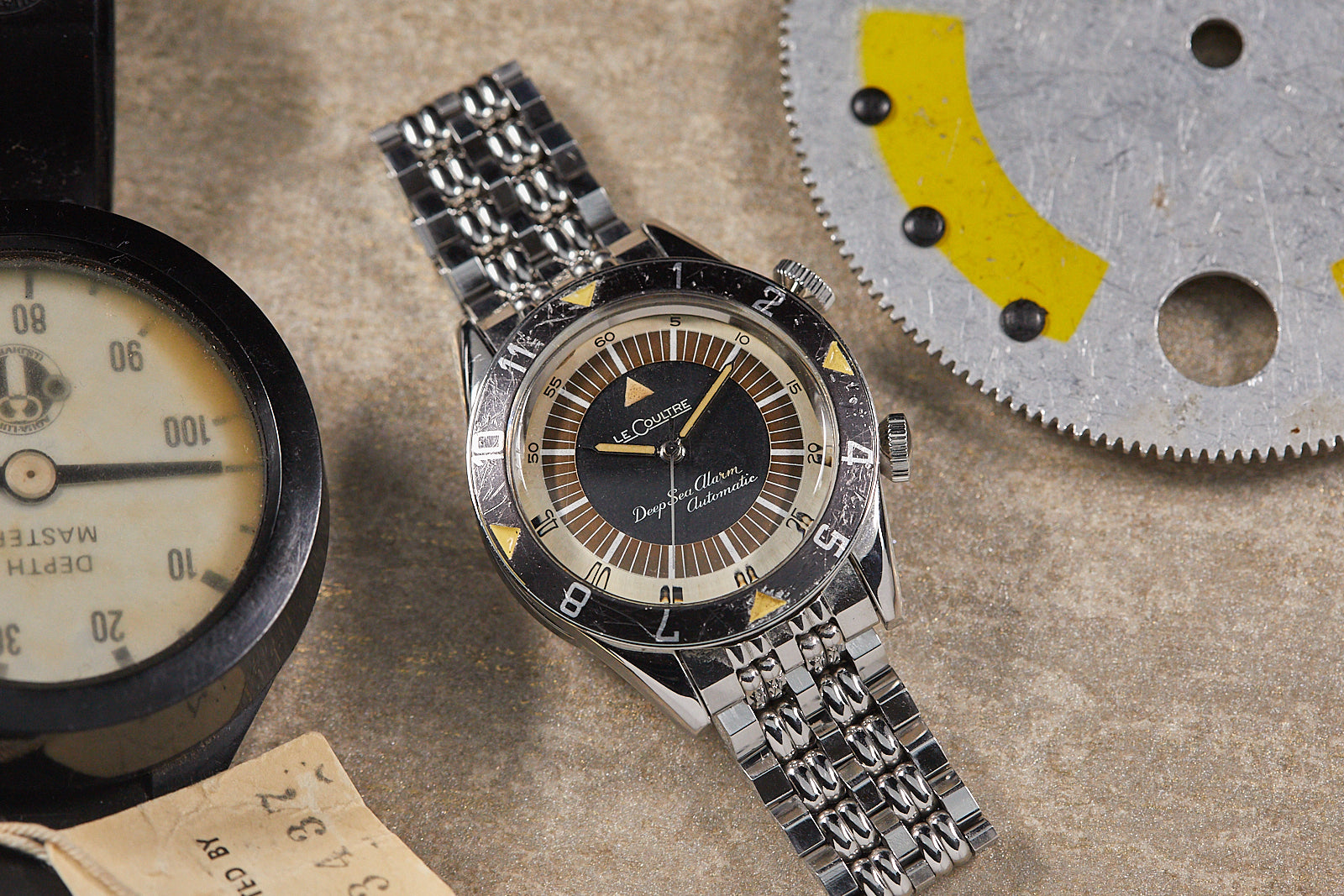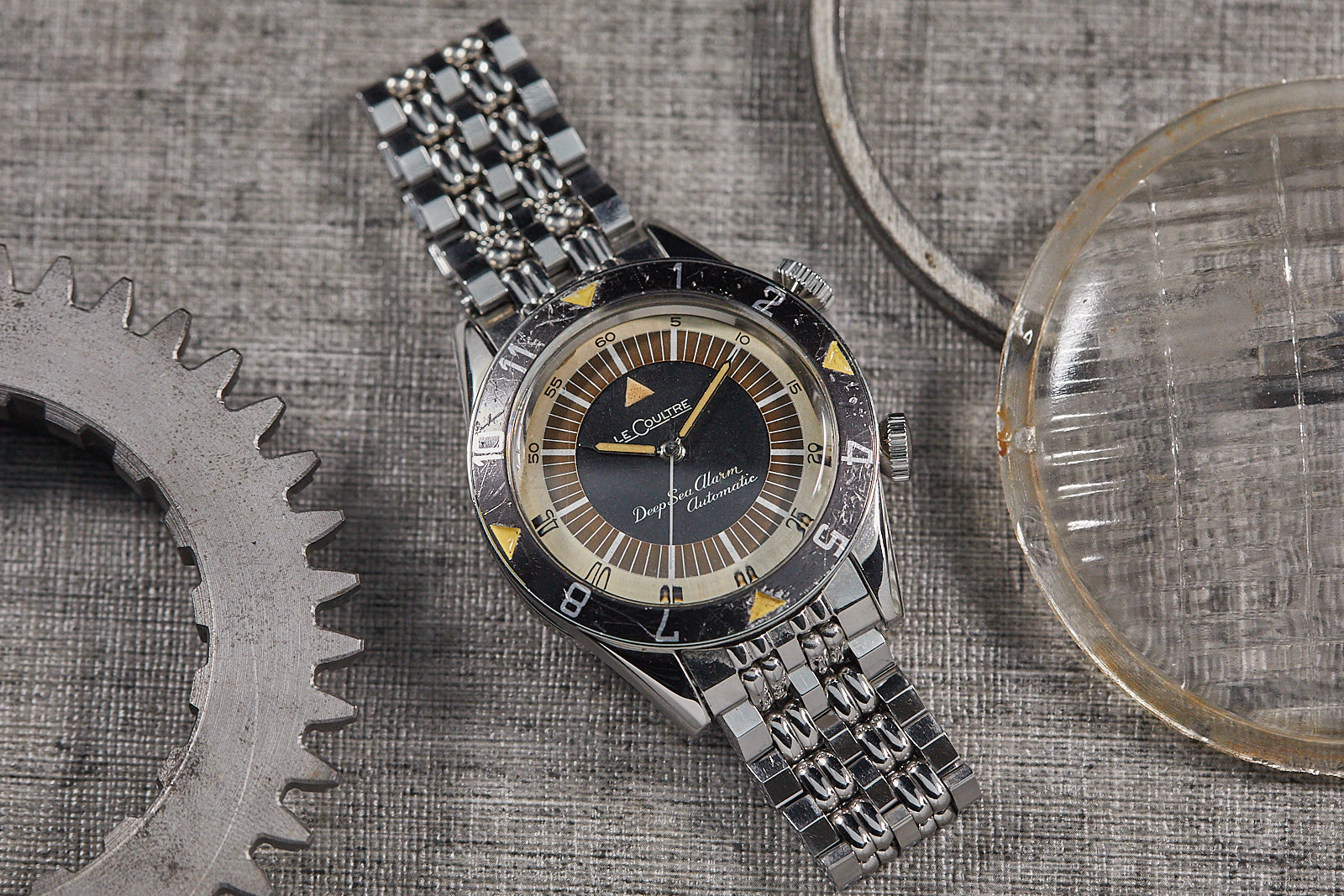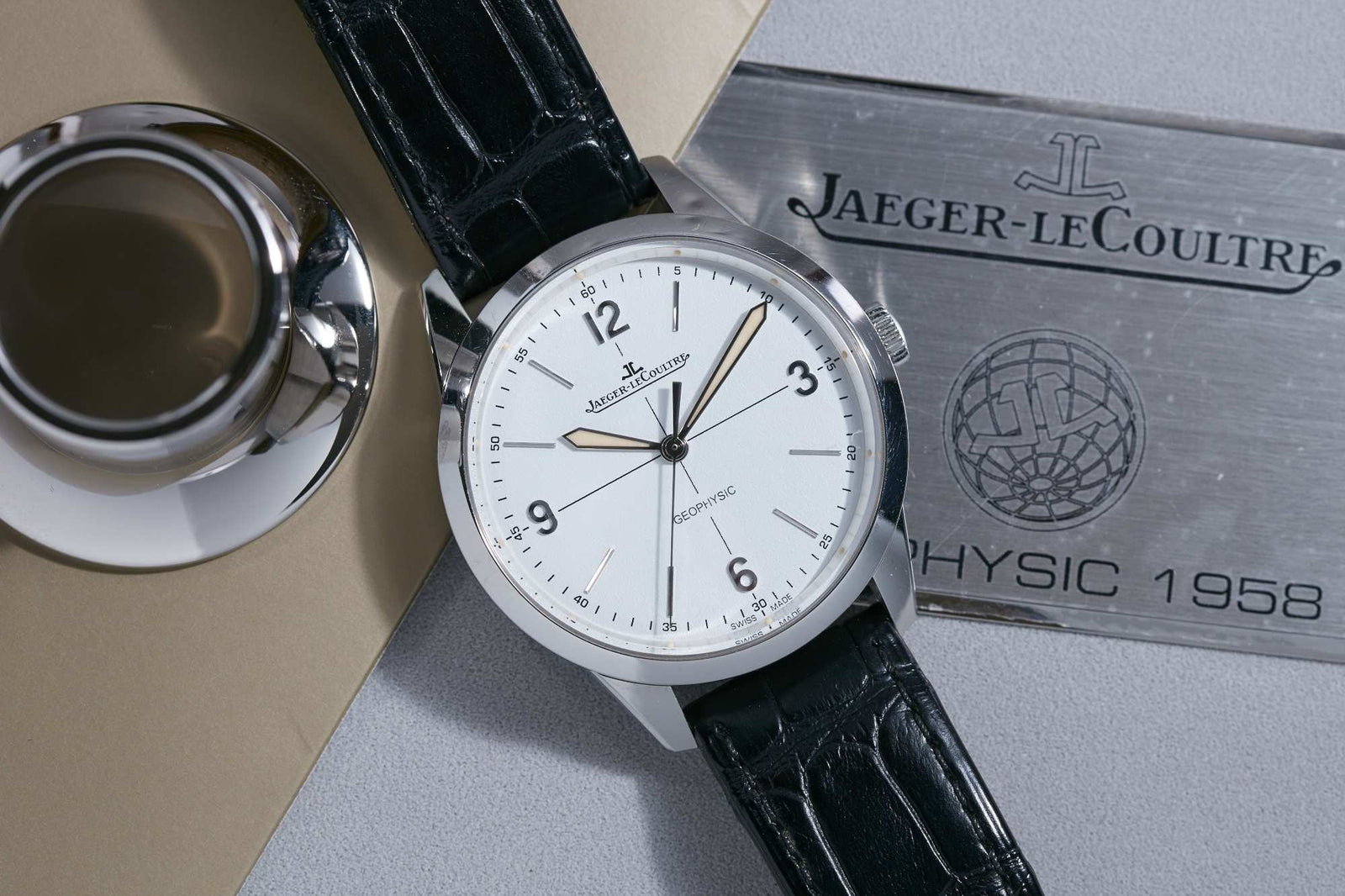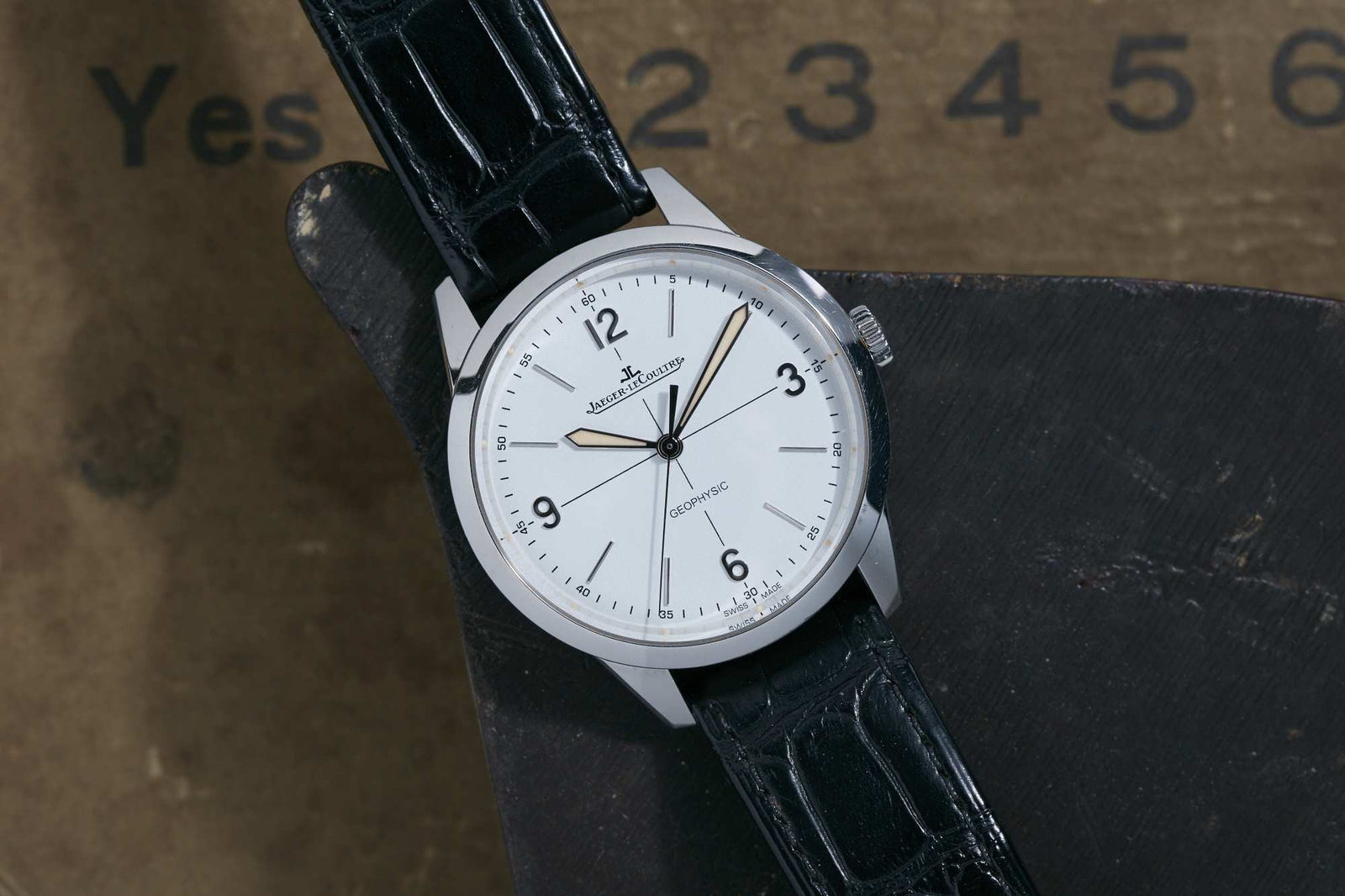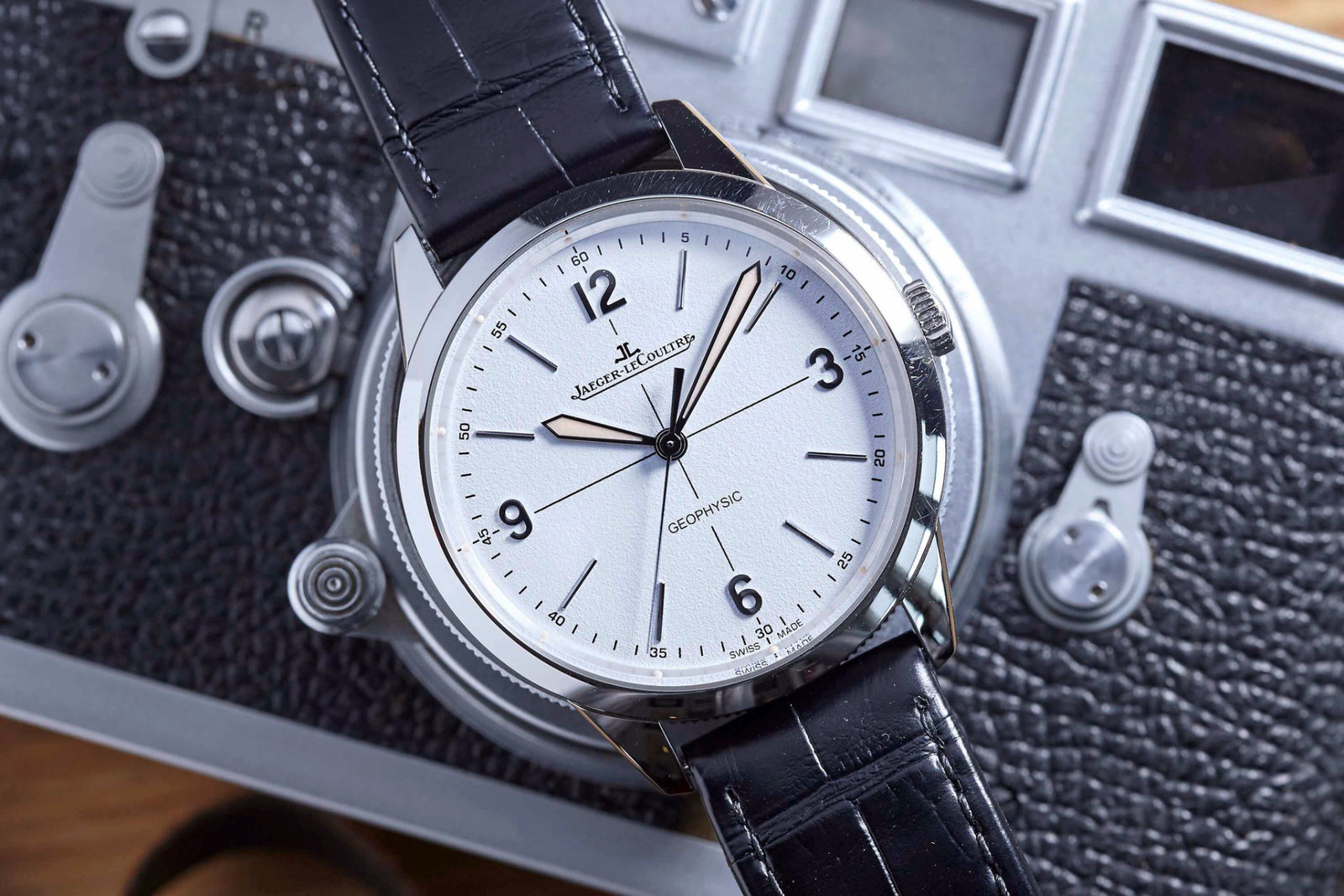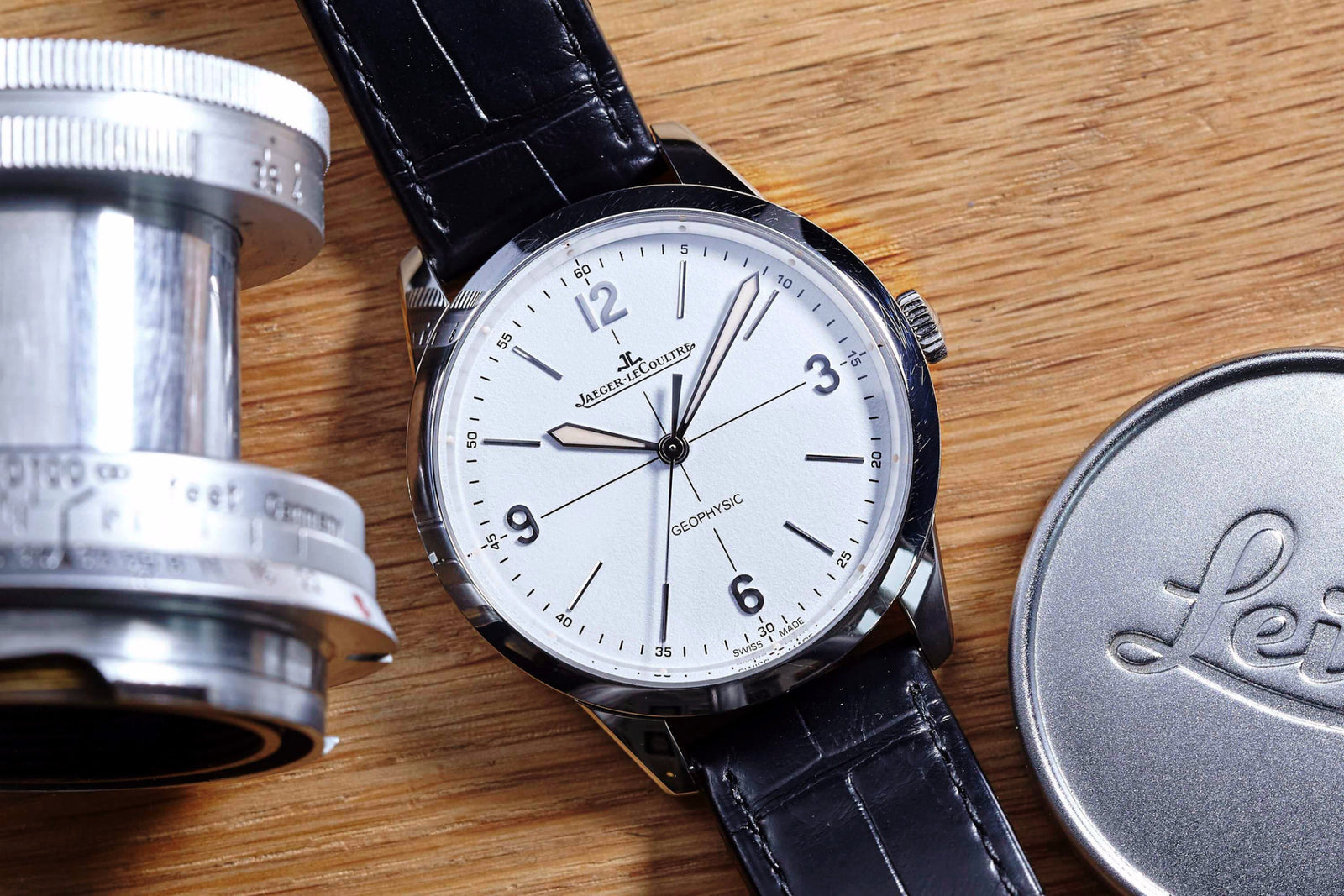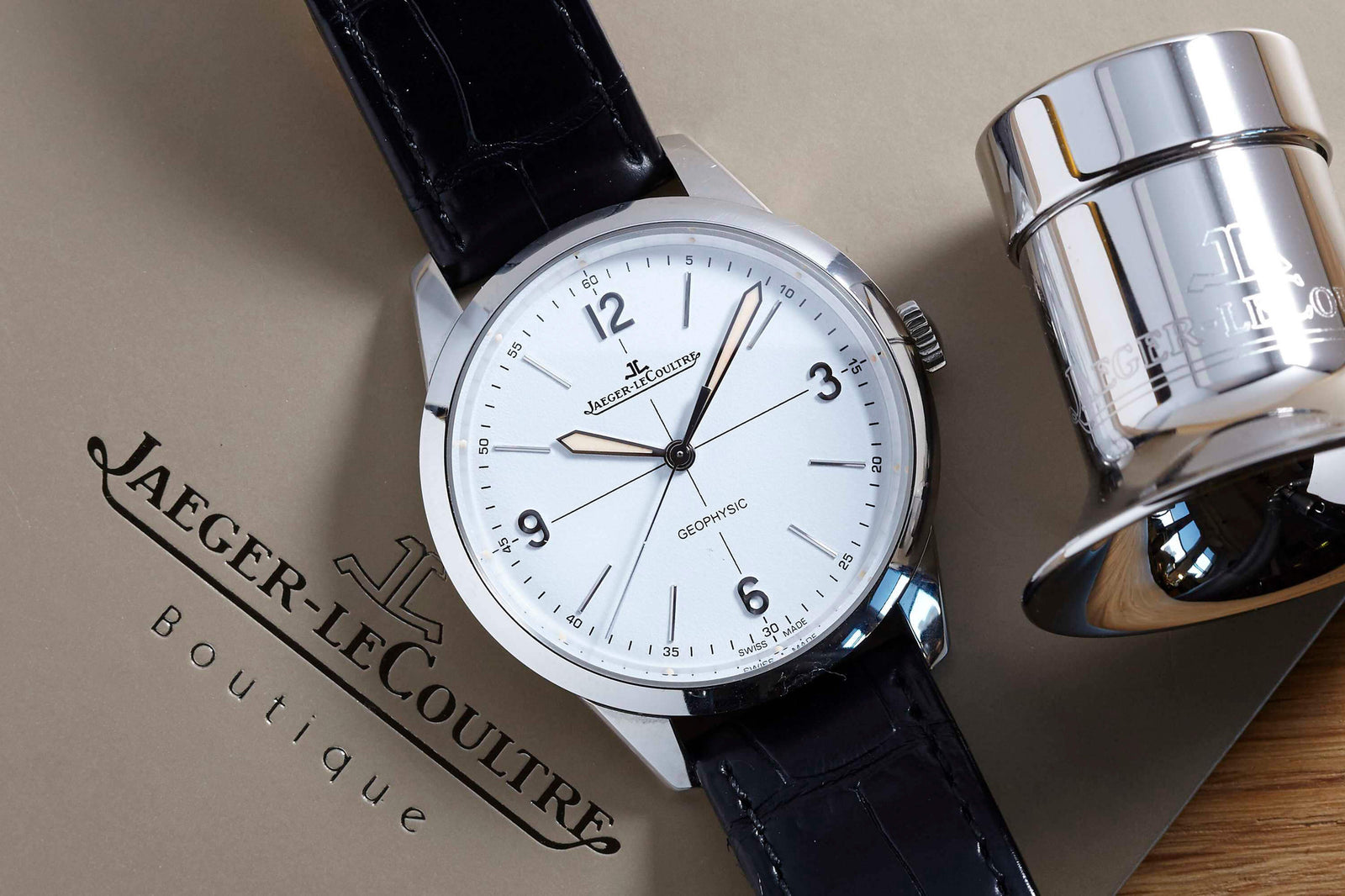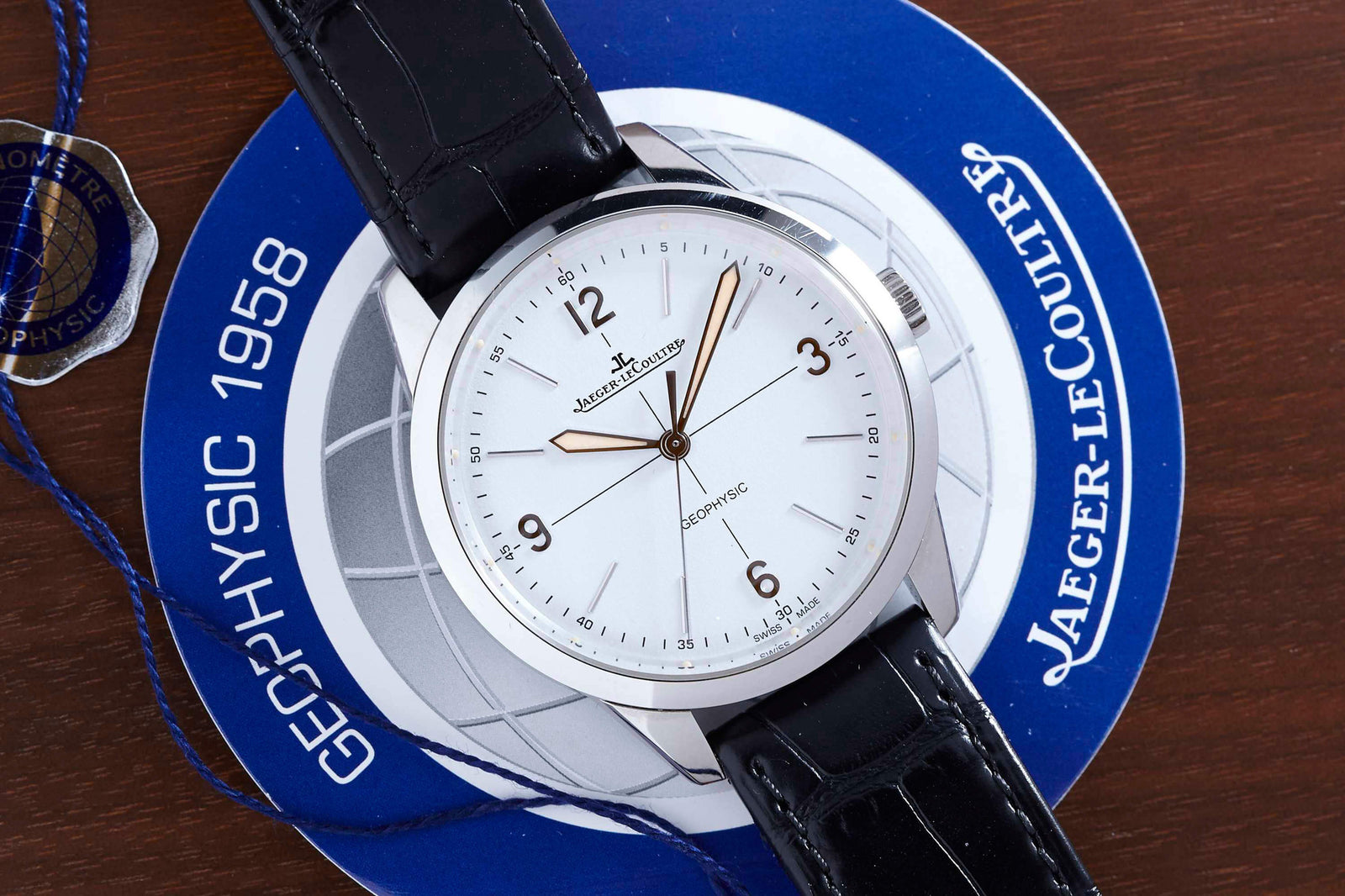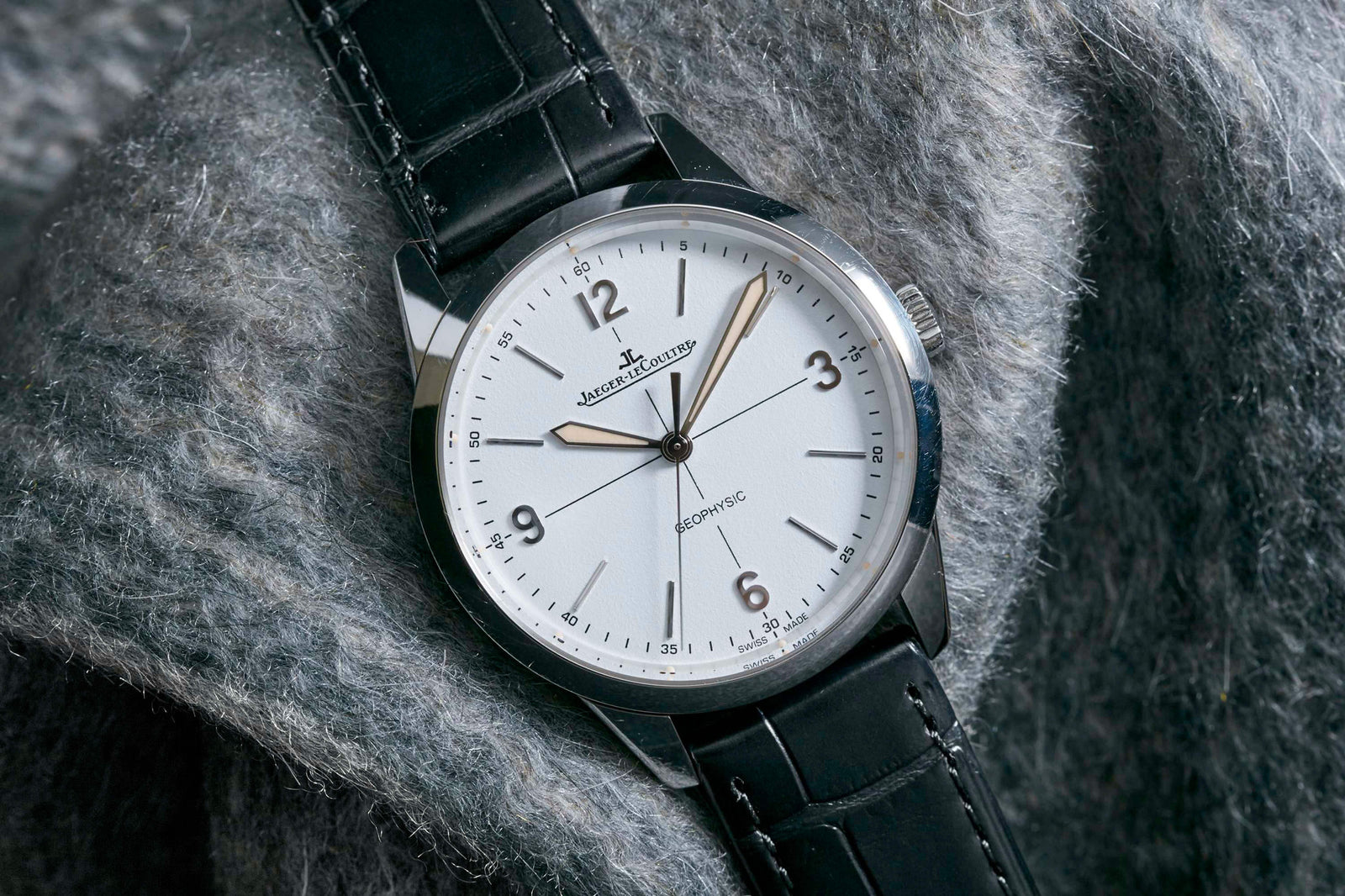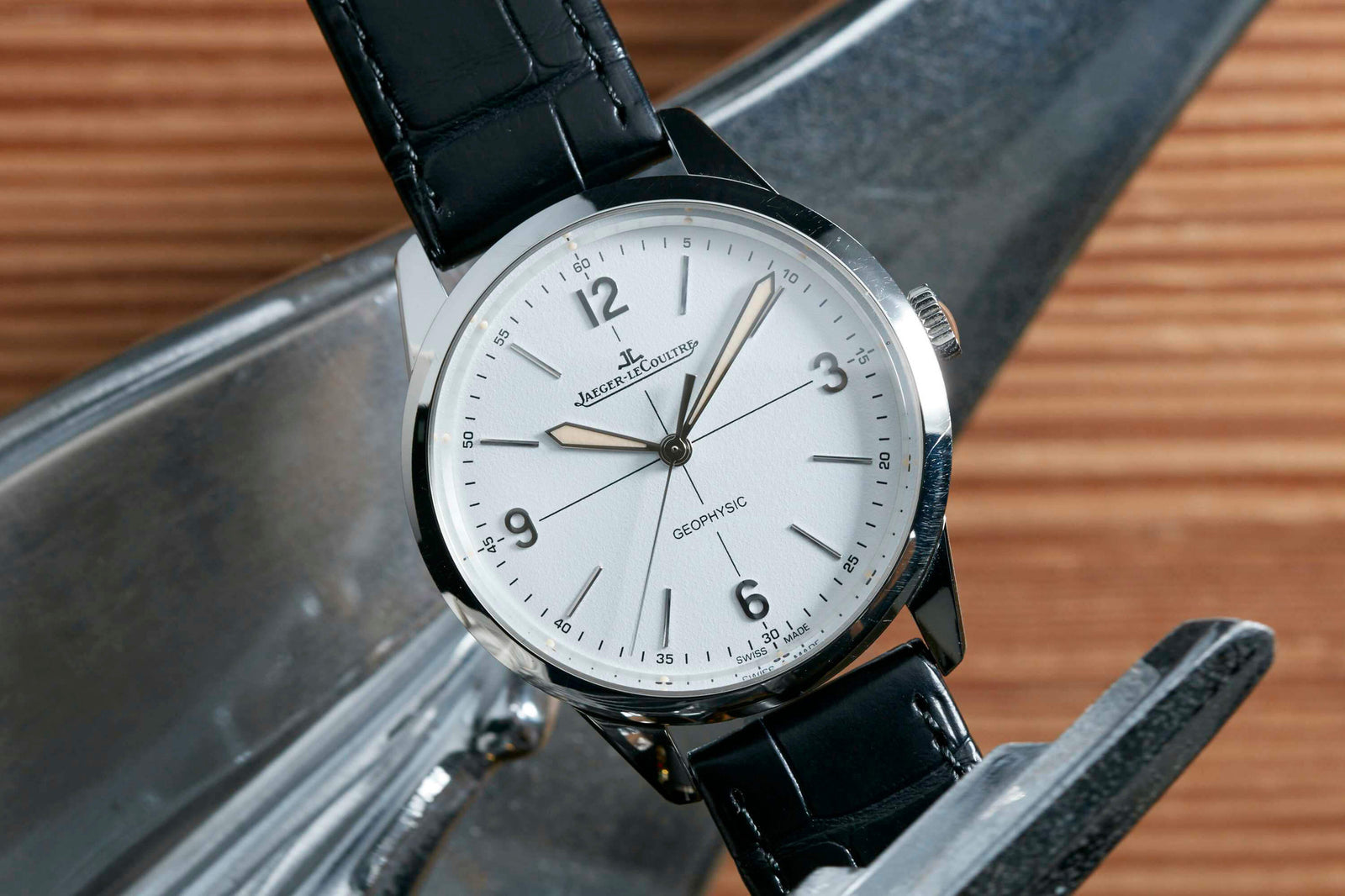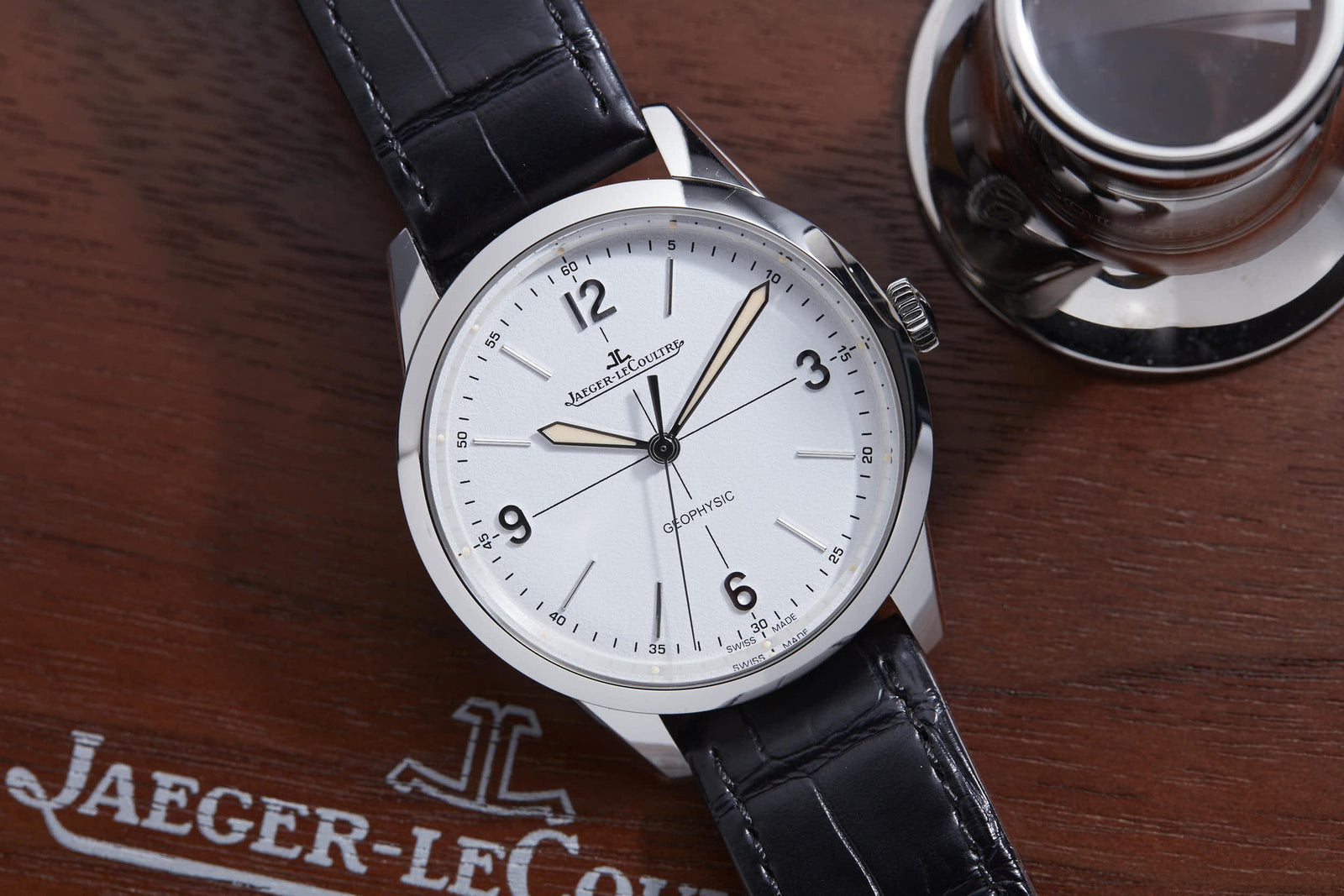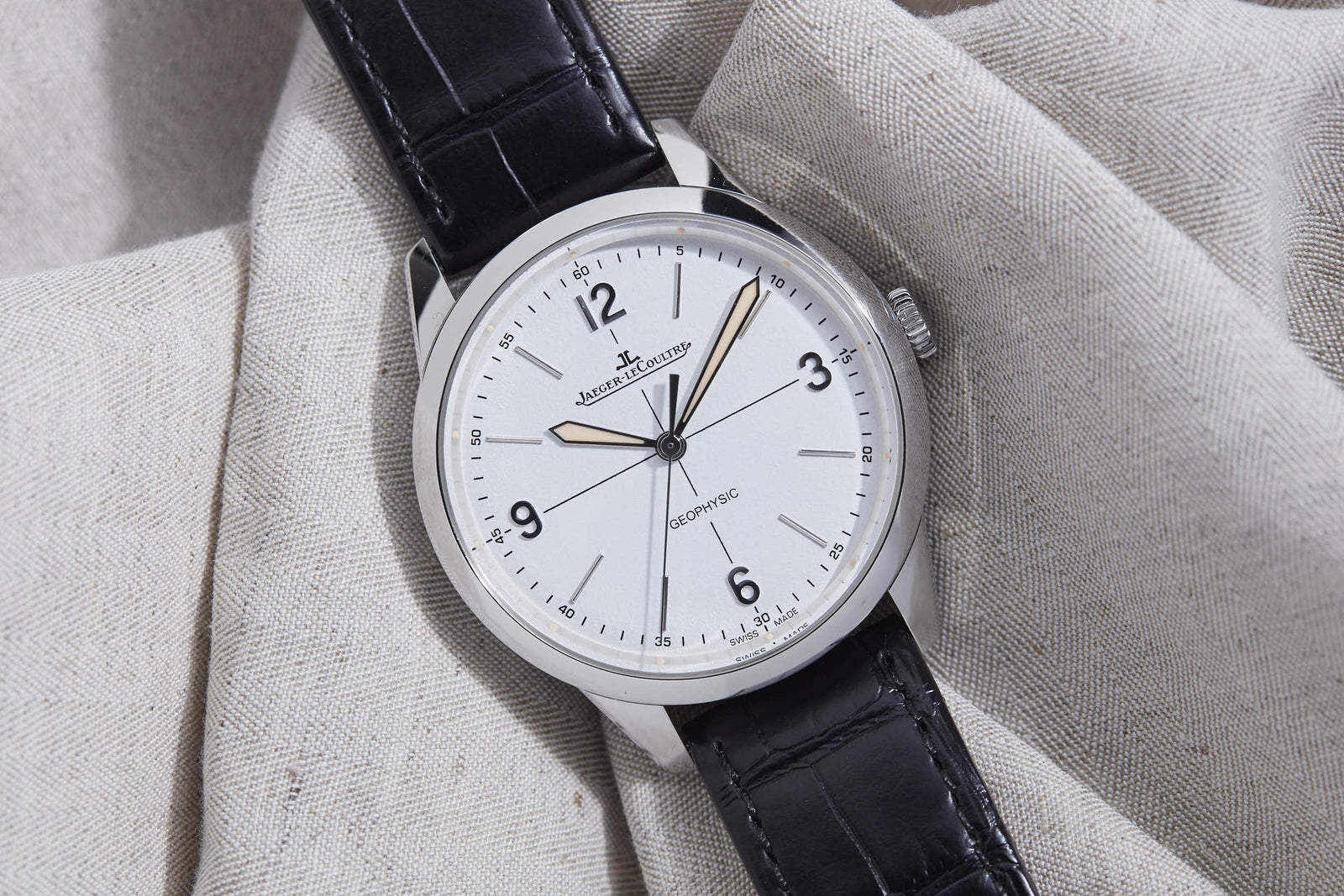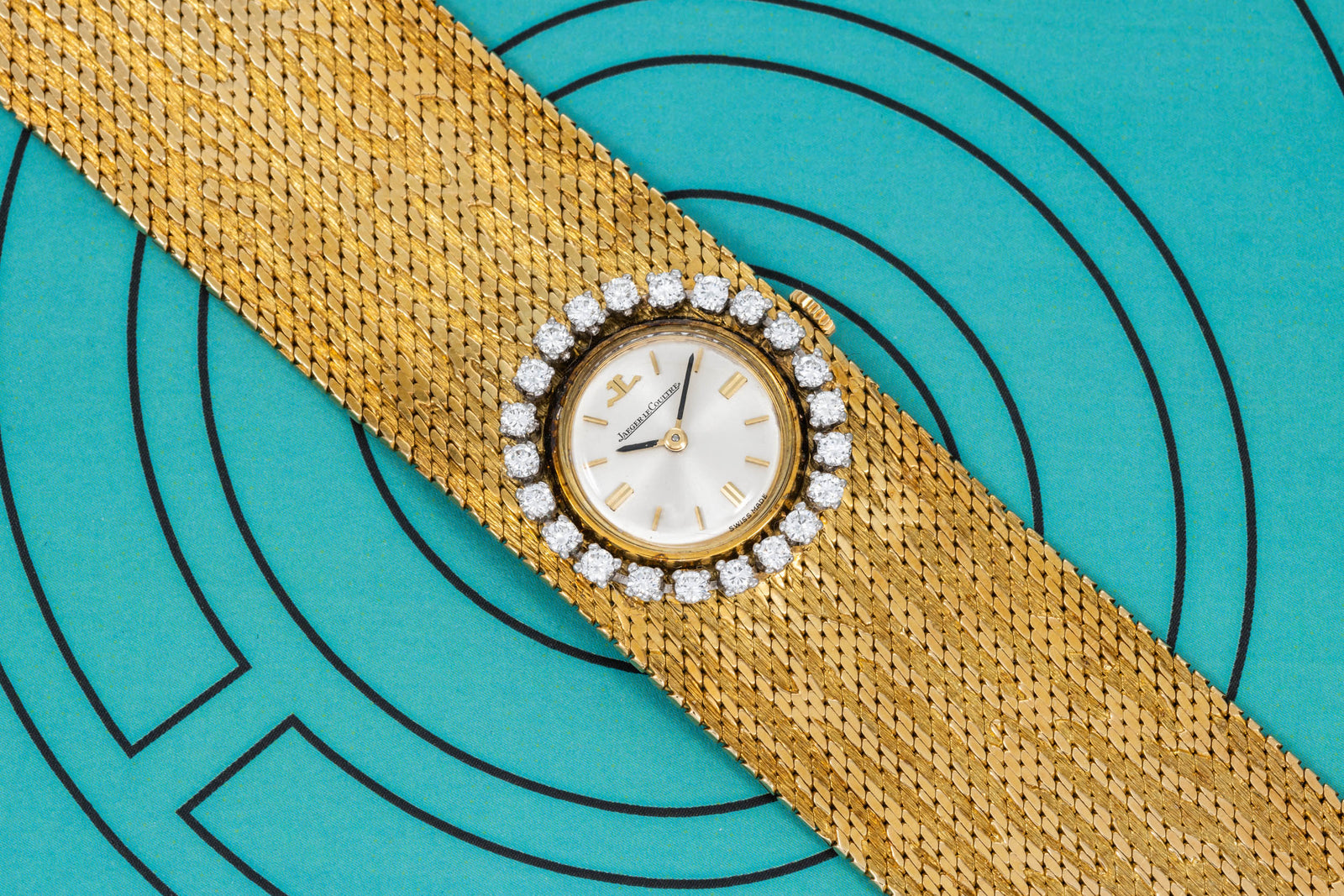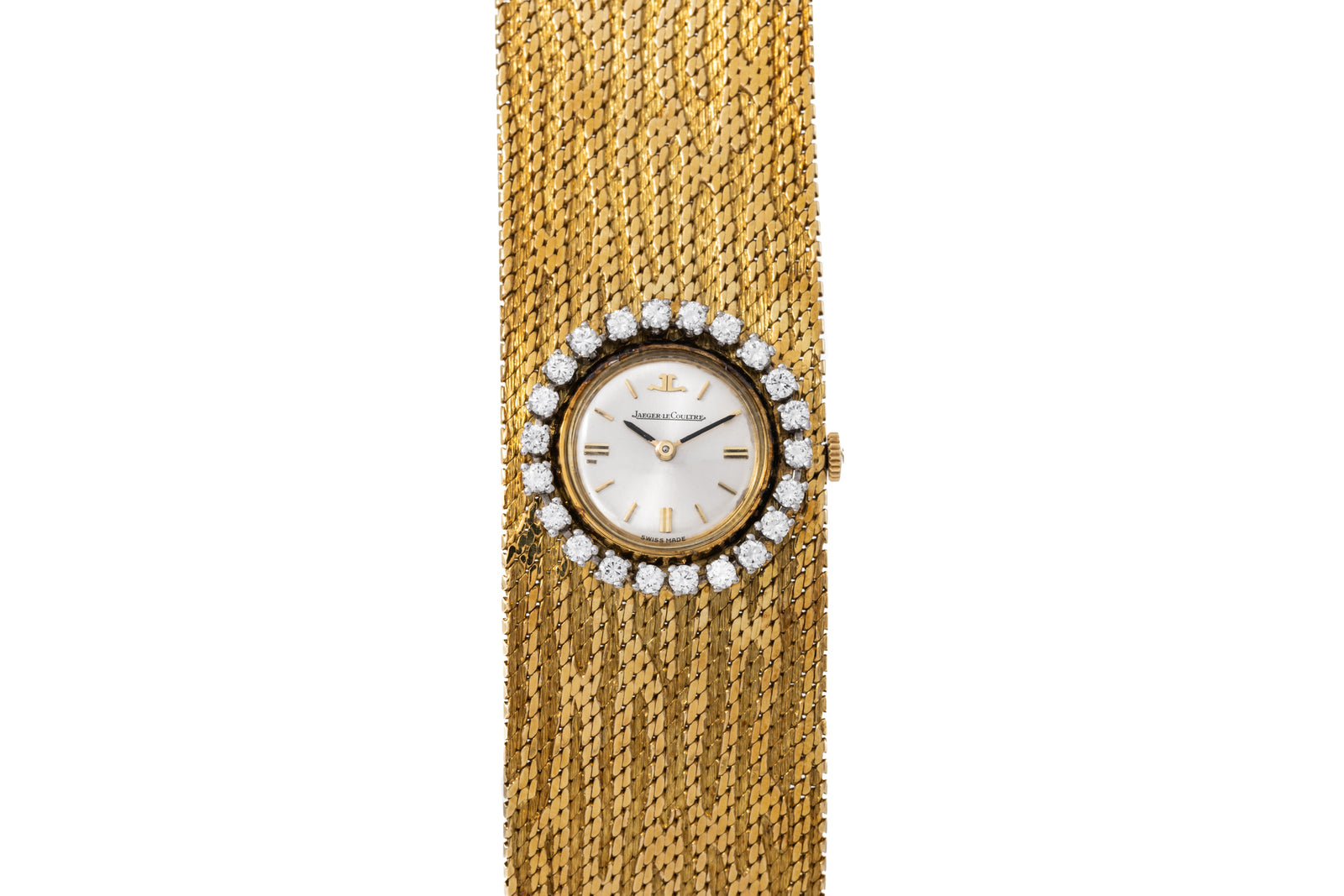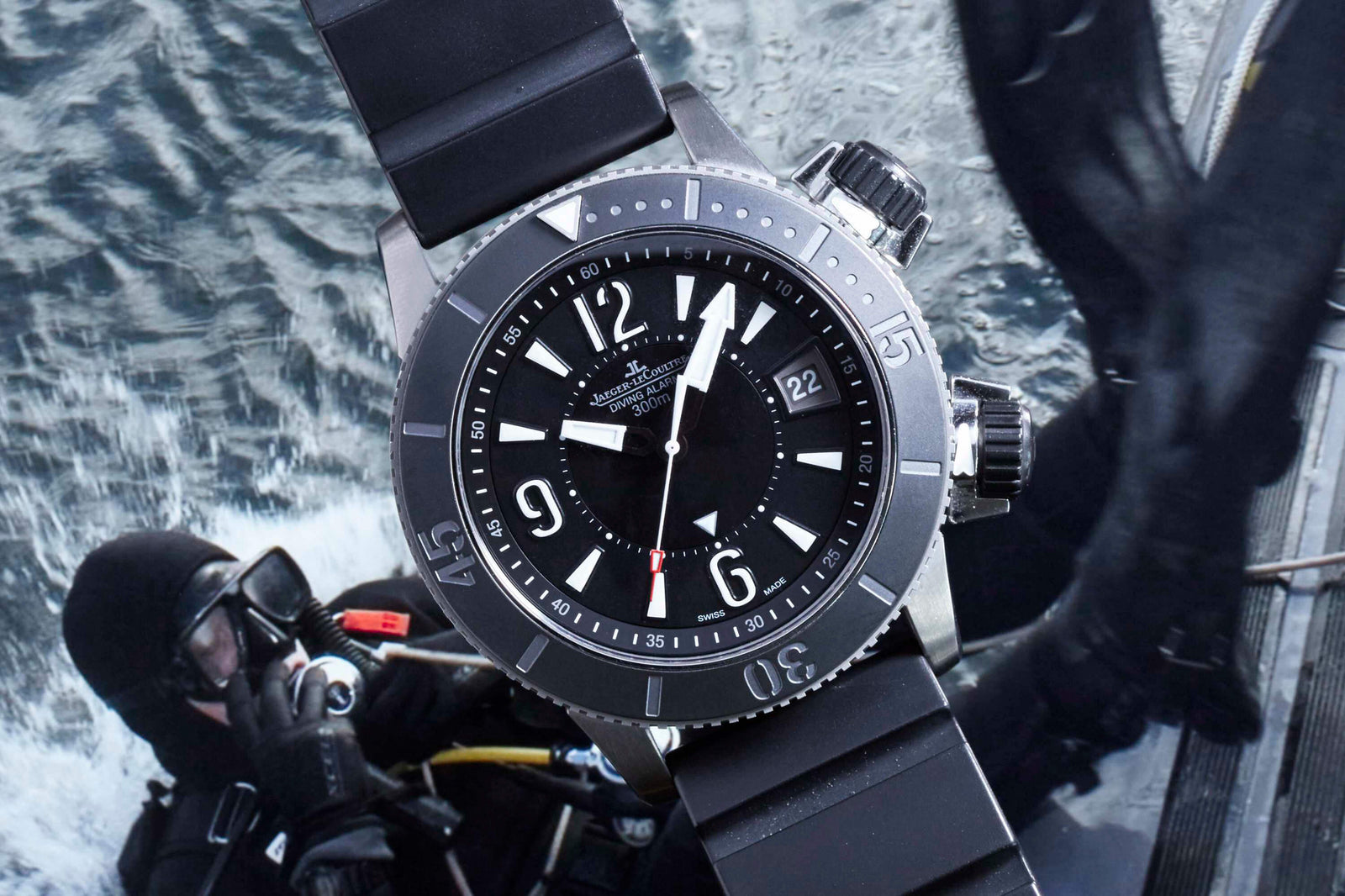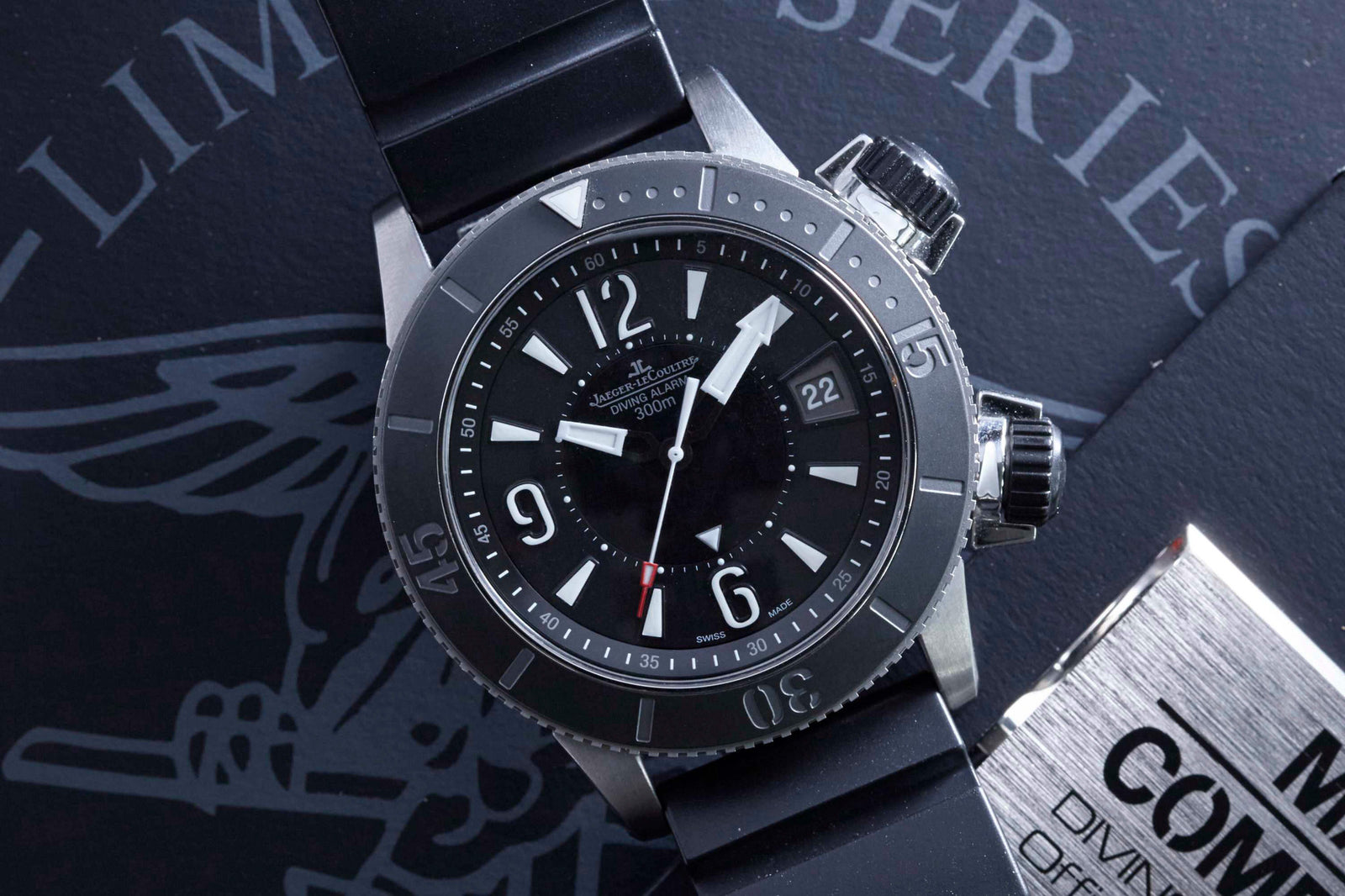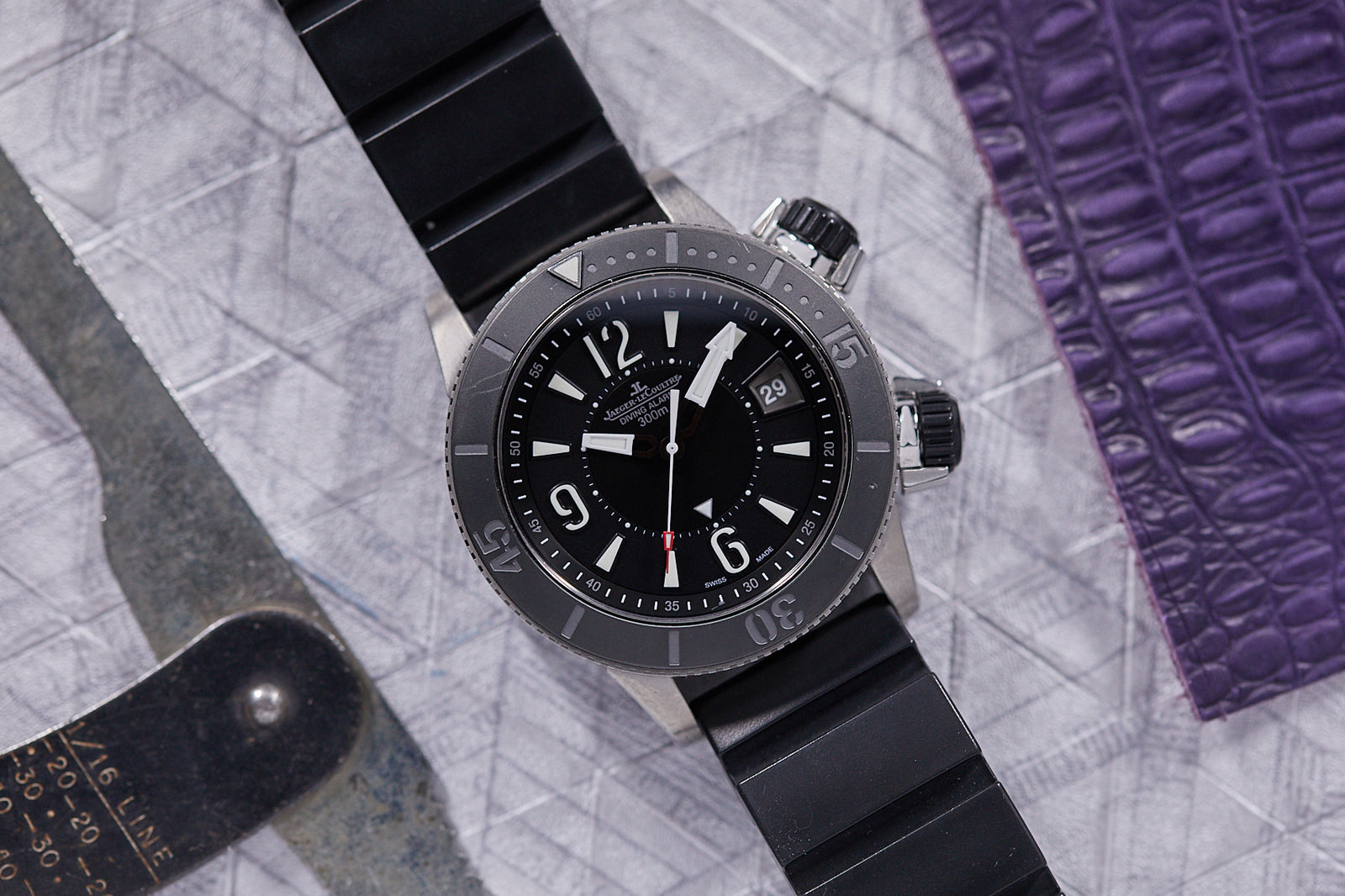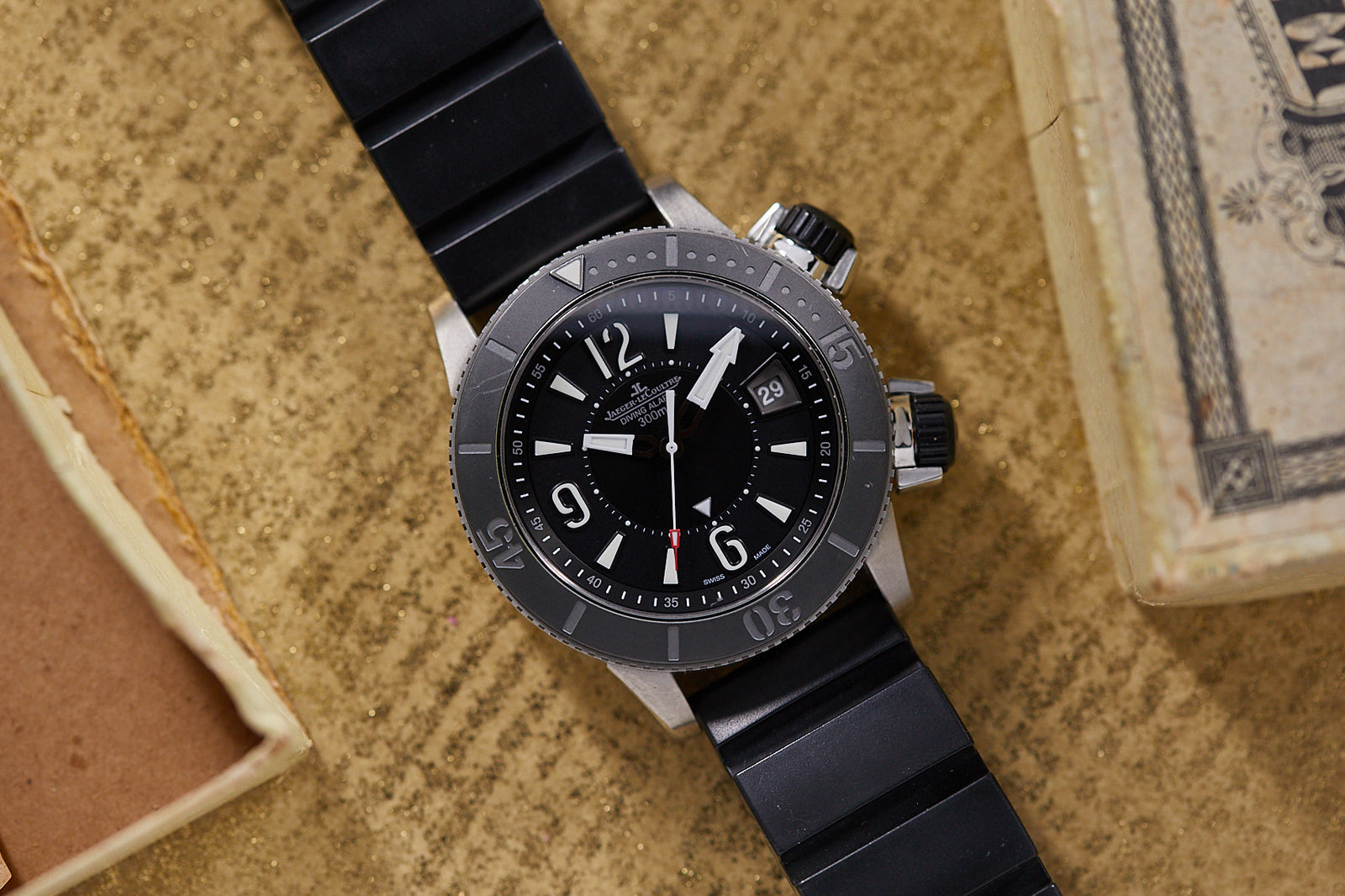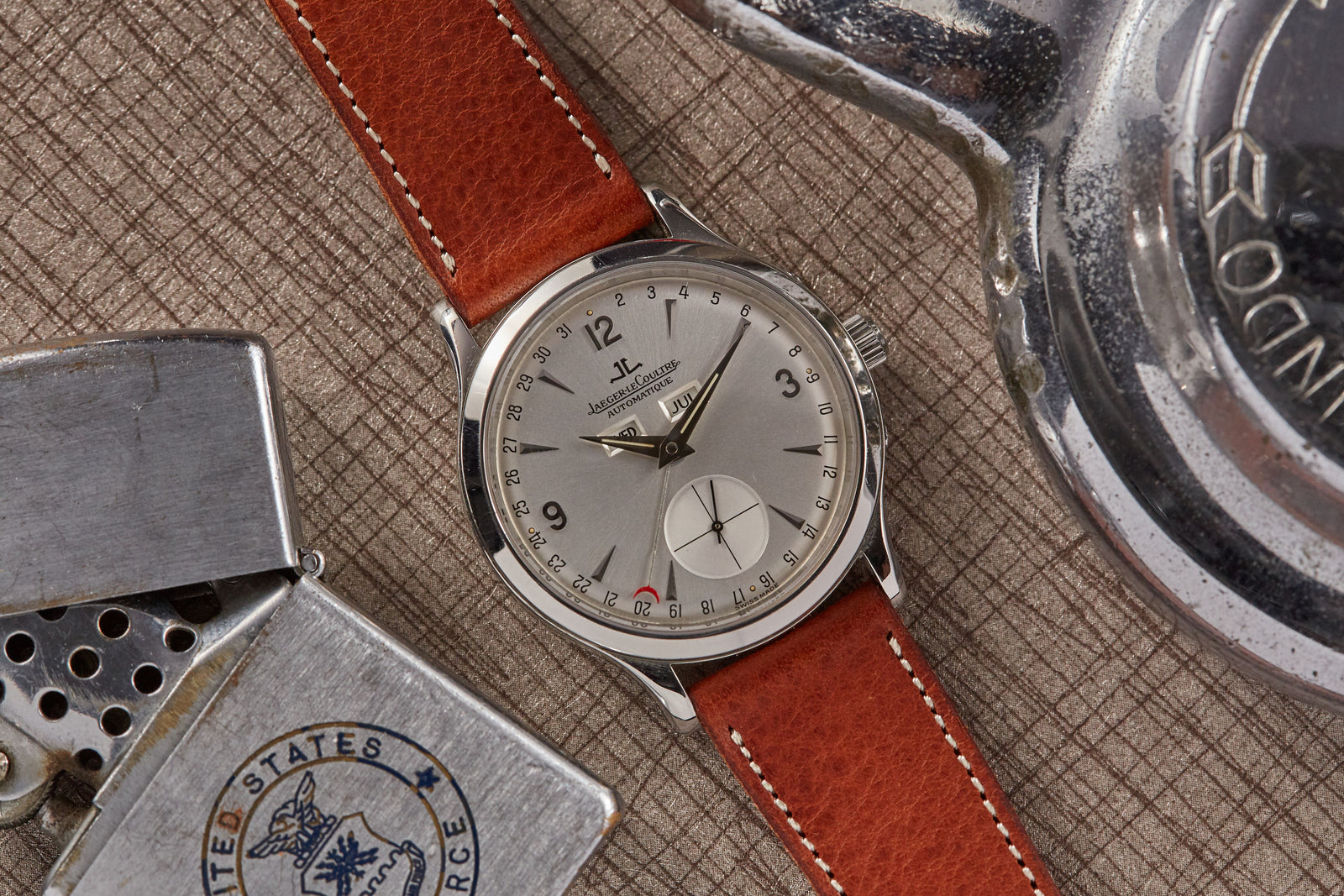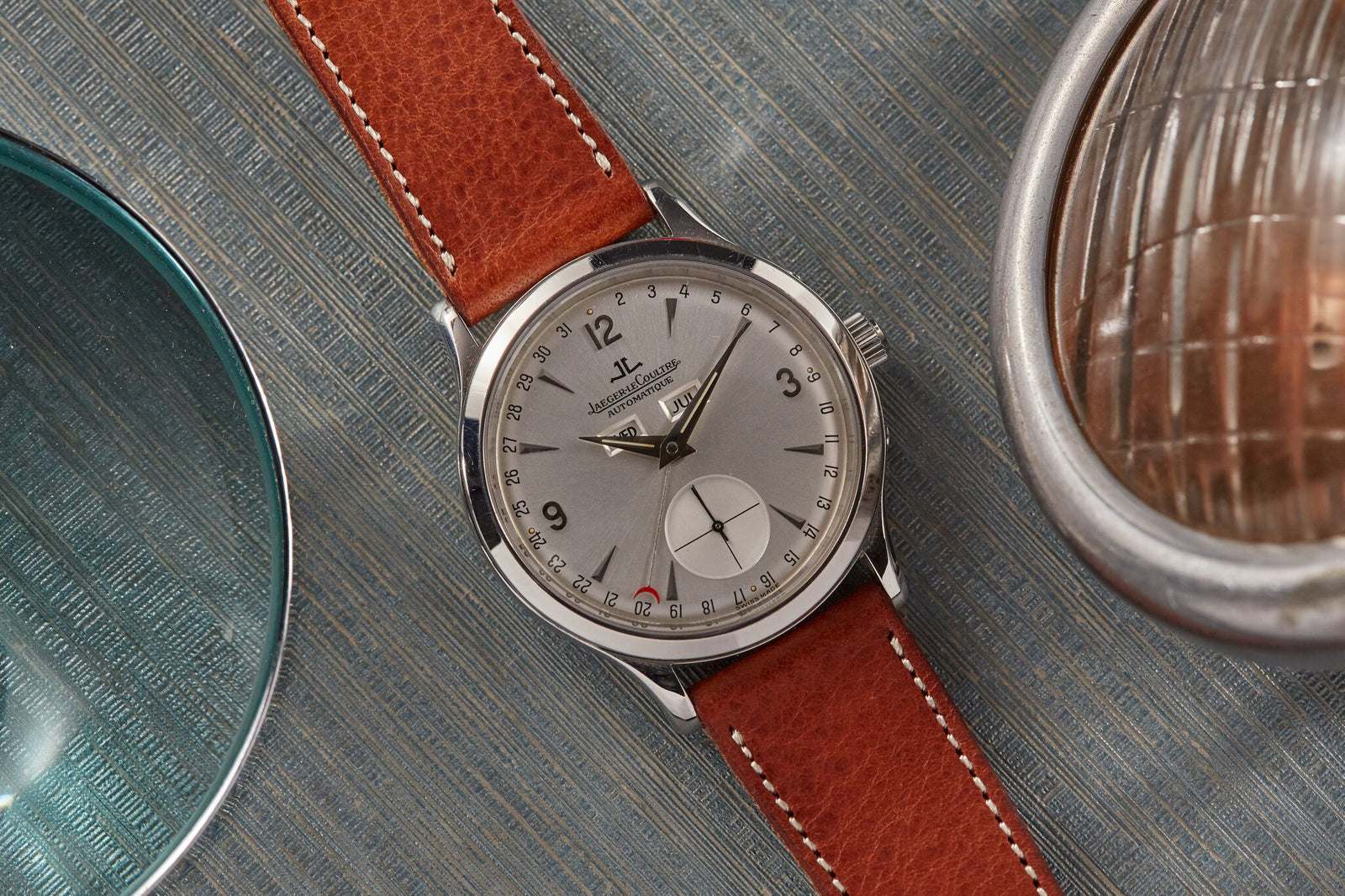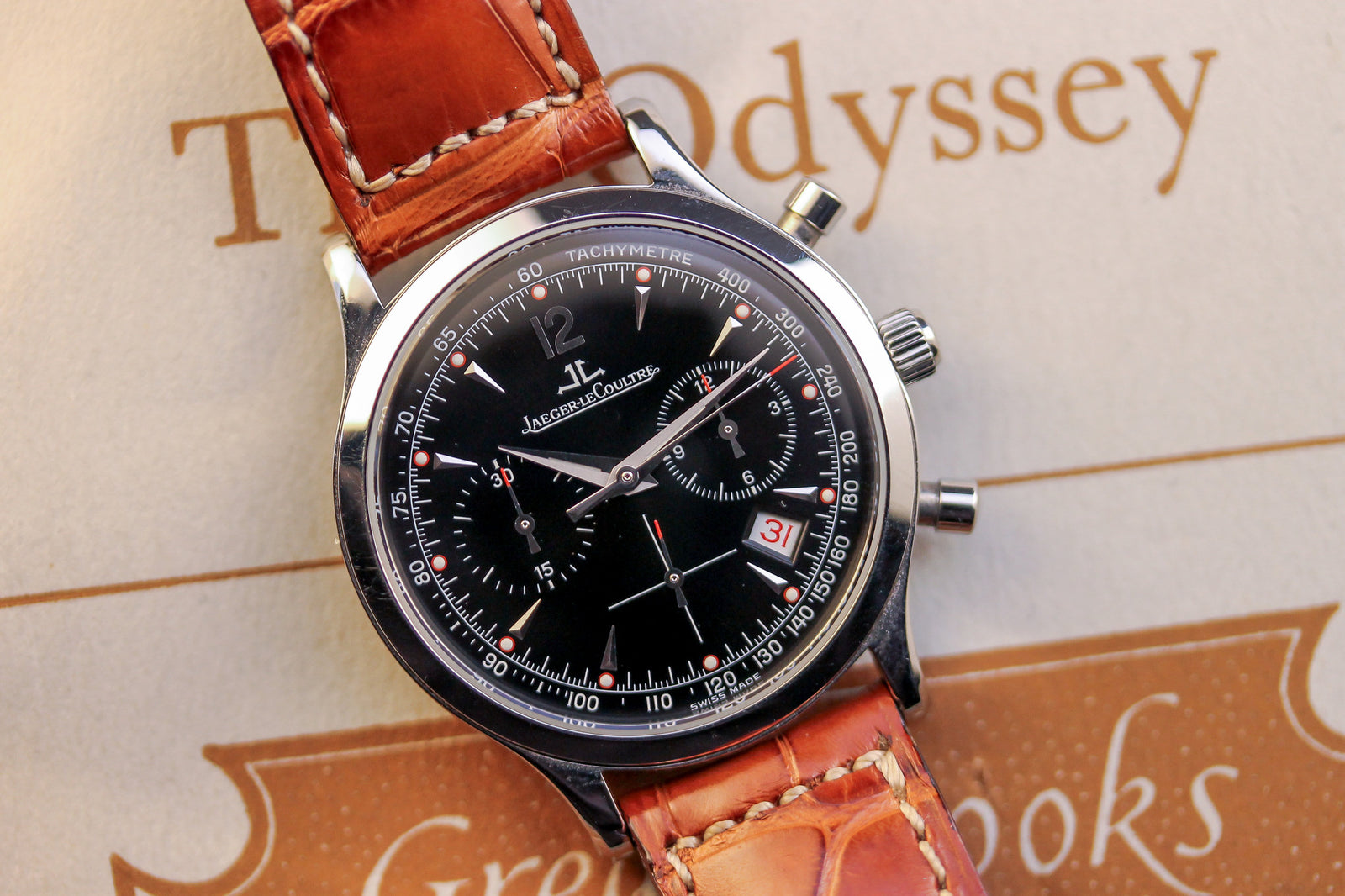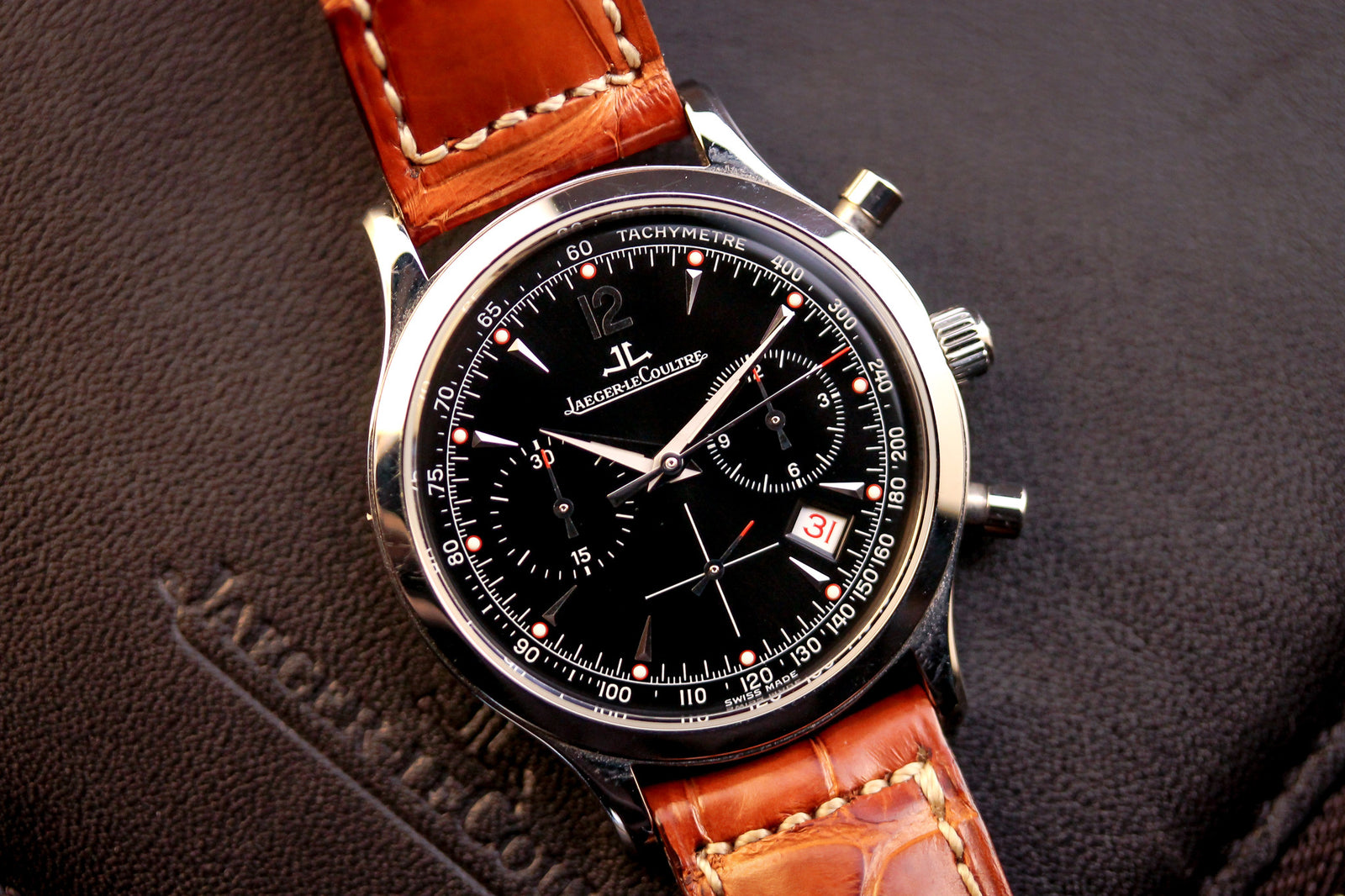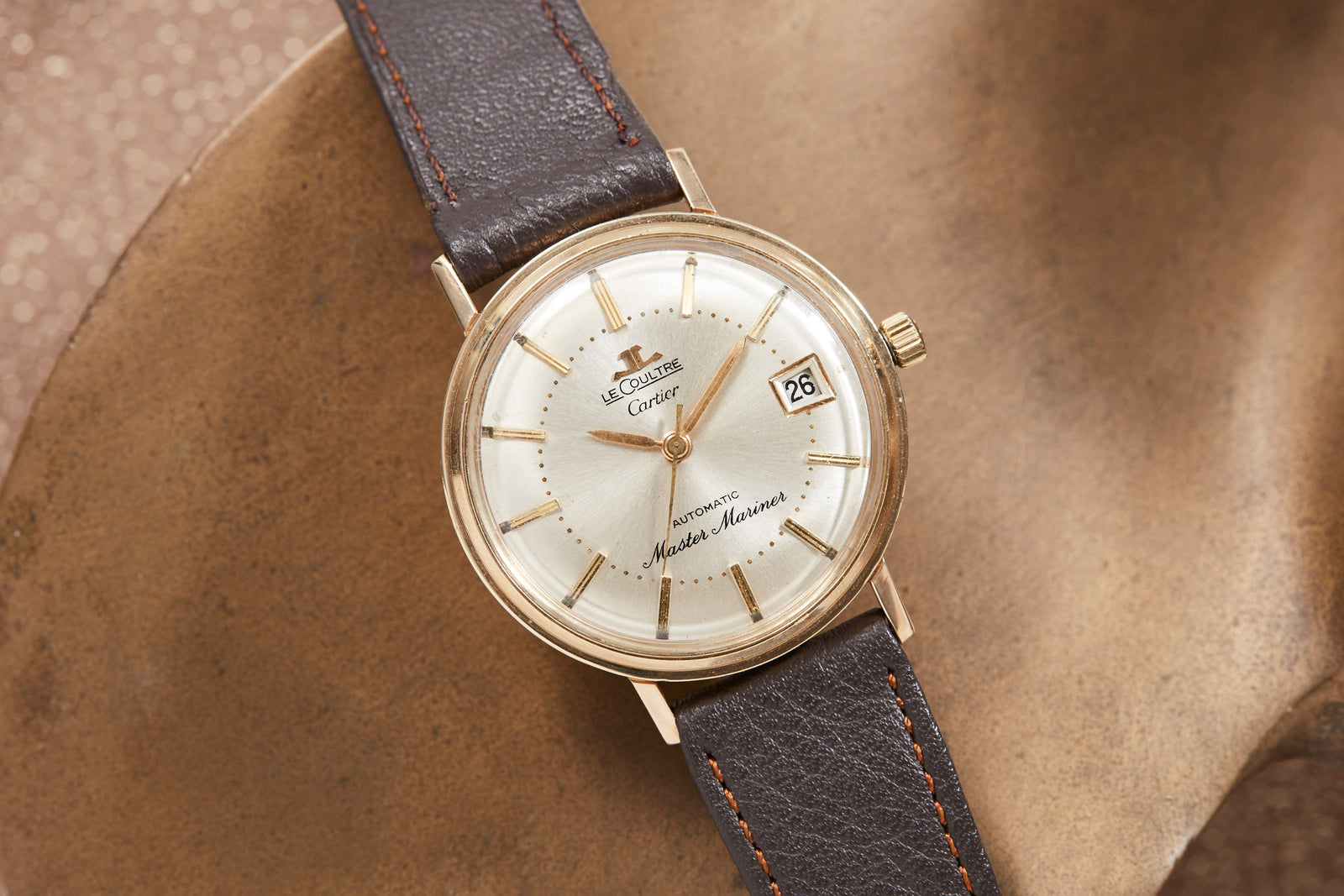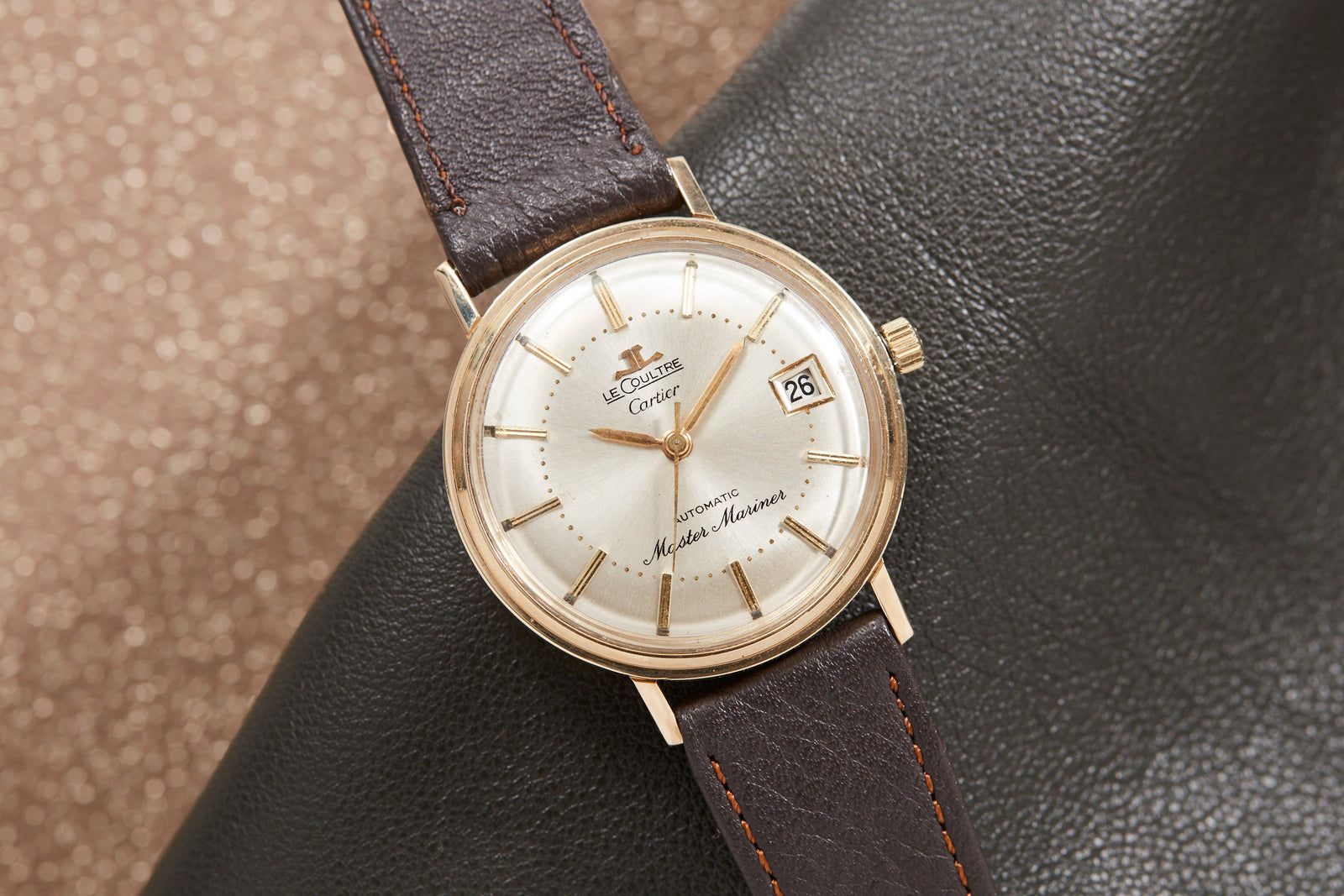Jaeger-LeCoultre Tribute to Deep Sea Alarm Box and Papers
- Soldspan>
- Sold
Why We Love it
–
Why We Love it
–January 23, 1960.
The rough seas of the Western Pacific had battered the US Navy tugboat Wandank, now 220 miles from Guam, for four days, as it made its way toward the waters above the Marianas Trench. The vessel that it towed, the bathyscaphe Trieste, was not built to weather the beating it received. A submersible, the Trieste was specially-designed by oceanographer Auguste Piccard to withstand crushing pressure at punishing depths, but the unceasing pounding of the waves had torn the surface telephone and tachometer from their mounts.
Tensions were high as the men who intended to pilot it—Auguste’s son Jacques and U.S. Navy Lieutenant Don Walsh—wondered if they could fulfill their mission and descend to the Challenger Deep.
The Trieste had dived before, and deep—far deeper, in fact, than had ever been achieved. On November 15, 1959, the Trieste reached a record 18,150 feet. Then, in December, the Trieste plunged 24,000 feet into the Nero Trench, as part of a U.S. Navy expedition—codenamed Project Nekton—to explore the deepest part of the world’s oceans.
In these dives, Trieste had proven a stalwart vessel, but the beating it withstood in the voyage to the Marianas Trench was enough to give Piccard pause.
Flares burnt brightly over the place where the Trieste was to make its descent. They had been placed there by the Trieste’s US Navy escort, the USS Lewis, a few days before, after the crew of the Lewis had sounded the trench with 800 tons of TNT. In the darkness of early morning, Piccard’s engineer asked him, “Do you think we’ll be able to make the dive?”
Piccard contemplated the possibilities before reaching the conclusion—the dive must go on. “I’m going to check the main circuits in the sphere,” he said. “If everything’s in order, we shall dive immediately.”
The circuits Piccard referred to were integral to the bathyscaphe’s functionality, because the bathyscaphe—essentially an undersea balloon with a gasoline-filled chamber in lieu of a helium-filled envelope—would lighten and ascend when the currents were cut. Any malfunction to the system and the bathyscaphe would not ascend, leaving it—and its occupants—stranded. With a few quick instructions to his crew, Piccard entered the bathyscaphe and checked the equipment.
By 8:23 AM, the Trieste started its slow, laborious descent, disappearing beneath the buffeting waves into a realm of eternal calm.
In Piccard’s words:
“By a depth of 1,500 feet the darkness was total. Inside the cabin we had turned on only a small light, just sufficient for reading the instruments. The temperature of the water was falling, and the cabin began to feel cold… As we look through the porthole, we see passing, still at three feet per second, torrents of plankton-bearing water that seem to rise from the abyss as we approach the bottom…. We pass successively those depths we reached during the preceding weeks: 18,600 feet, 24,000 feet… But we are not yet on the bottom.”
Throughout the descent, Piccard and Walsh maintained contact with the Wandank and the Lewis through a sonar telephone. But when the bathyscaphe reached 32,500 feet—four hours into the dive—the telephone went silent. The Trieste was 300 feet from the bottom.
Walsh relayed the following message on the telephone, not knowing if it would be heard by their crew three miles above them: “This is Trieste on the bottom, Challenger Deep. Six three zero zero fathoms. Over.”
After a few agonizing seconds, a faint voice could be heard on the other line: “I hear you weakly but clearly. Please repeat the depth.”
“Six three zero zero fathoms,” Walsh replied.
They had gone deeper than anyone had ever been before—to the very bottom of the world.
In 1959, a few months before the Trieste's famous voyage, Jaeger-LeCoultre released a watch that would take on a legend of its own: the Deep Sea Alarm.
For the Memovox, JLC's first alarm wristwatch, developed a different alarm mechanism than Vulcain had used with its revolutionary Cricket: a hammer that strikes against a post that is directly welded to the case back. This was unlike the Cricket, which uses a resonant dual case back design. In so doing, JLC set itself apart, and created one of the most iconic models of post-war watchmaking.
Such an icon of horology lends itself very well to adaptation for many different purposes. In the late 1950s, brands such as Rolex and Blancpain released some of the first dedicated dive watches: the Submariner and the Fifty Fathoms, respectively. JLC followed suit with the Deep Sea Alarm. The Deep Sea Alarm made waves in that it was the first automatic wrist alarm intended to be worn underwater.
Rated to a depth of 200 meters, the Deep Sea Alarm was unmatched by any other manufacturer until Vulcain released the Cricket Nautical in 1961. Two versions were released of the Deep Sea Alarm: one, for the European market, bore the full name of Jaeger-LeCoultre but lacked "Deep Sea Alarm" on the dial. The U.S. version, however, marketed under the name LeCoultre, bore the model name: "Deep Sea Alarm Automatic."
Either way you look at it, though, the Deep Sea was rare, with only 950 pieces being produced in its two year run. Existing examples that find their way on the vintage marketplace often suffer from signs of wear, particularly in the bezels. Many a collector dreams of finding one in excellent condition (at a Goodwill, maybe), but those examples are few and far between.
Fortunately for us, JLC re-released the Deep Sea Alarm in 2011. Though the proportions of the Tribute to Deep Sea might be slightly bigger than the original (40.5mm in the Tribute versus 39 in the original), otherwise JLC clung closely to the look and feel of the original. Like the Deep Sea, the Tribute was released for the European and American markets, with the same differences in dial as the original. While 959 examples were released in the European market, only 359 were made of the American version, one of which we are fortunate to offer here.
Coupling superior vintage looks and a high grade in-house automatic movement (the Caliber 956), the Tribute to Deep Sea is a no-brainer for the lover of vintage-inspired modern pieces. This particular example is minty-fresh, comes complete with all of its original accoutrements, and is still under warranty from JLC through August of this year!
A:S Guarantee
+
A:S Guarantee
+Our Pledge
Analog:Shift stands behind the authenticity of our products in perpetuity.
Condition
Since our pieces are vintage or pre-owned, please expect wear & patina from usage and age. Please read each item description and examine all product images.
Warranty
We back each Analog:Shift vintage timepiece with a one-year mechanical warranty from the date of purchase.
International Buyers
Please contact us prior to purchase for additional details on shipping and payment options.
Shipping & Returns
+
Shipping & Returns
+All of our watches include complementary insured shipping within the 50 states.
Most of our products are on hand and will ship directly from our headquarters in New York City. In some cases, watches will be shipped directly from one of our authorized partners.
We generally ship our products via FedEx, fully insured, within 5 business days of purchase. An adult signature is required for receipt of all packages for insurance purposes. Expedited shipping is available at an additional cost. We are also happy to hand deliver your purchase in Manhattan or you may pick it up at our showroom.
Returns must be sent overnight or by priority international delivery, fully insured and paid for by the customer. A restocking fee may apply. Watches must be returned in the same condition as initially shipped.
We welcome international buyers, please contact us prior to purchase for additional details on shipping and payment options.









Jaeger-LeCoultre Tribute to Deep Sea Alarm Box and Papers
- Soldspan>
- Sold








